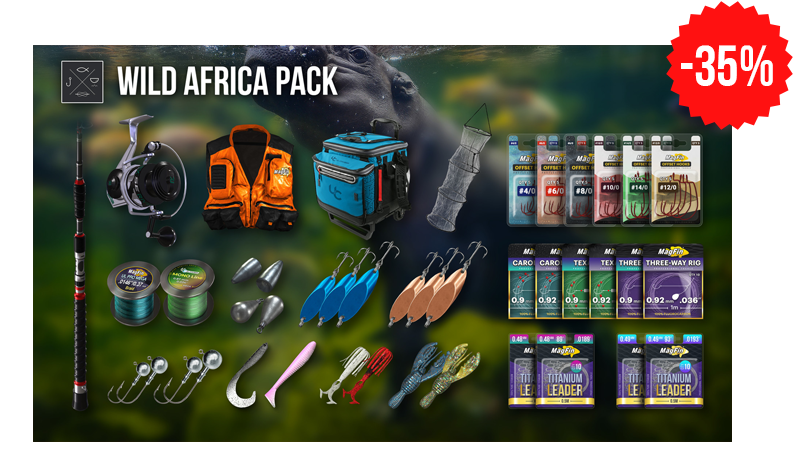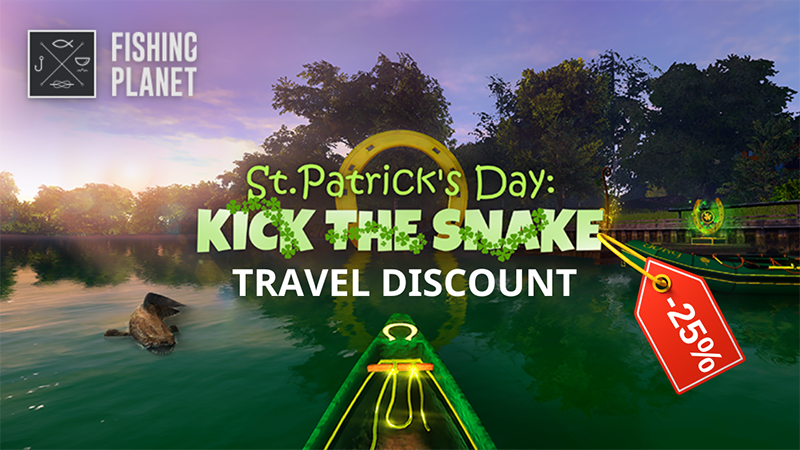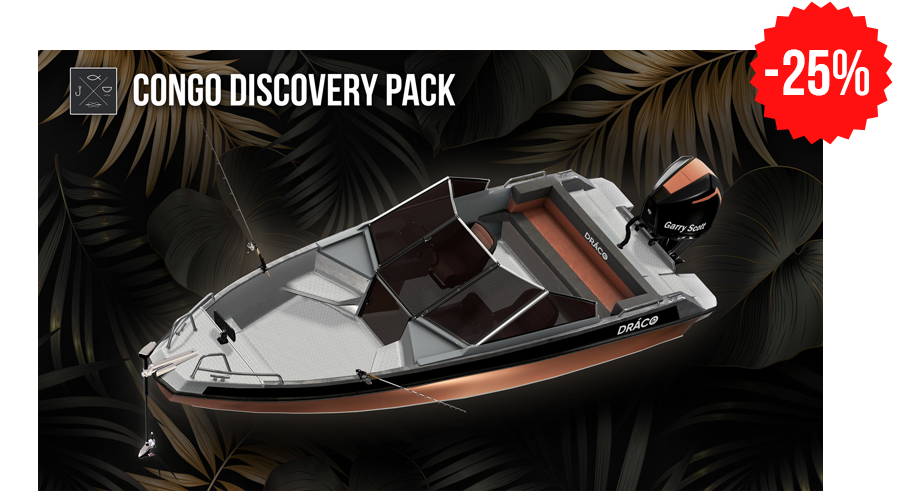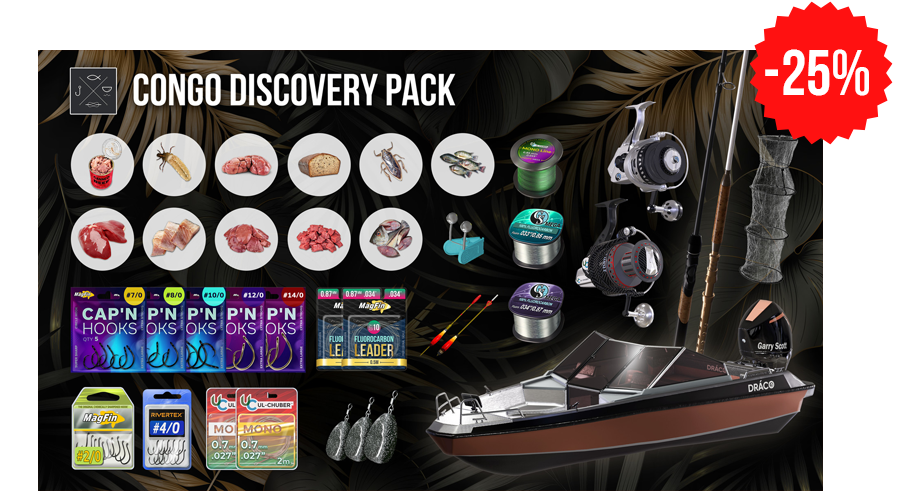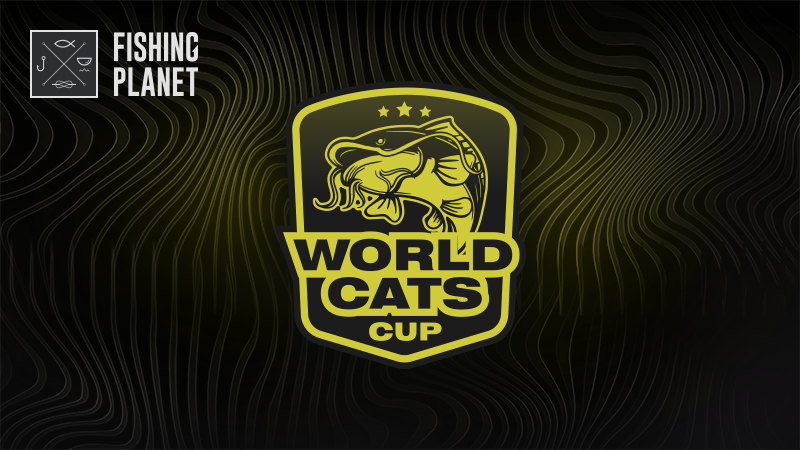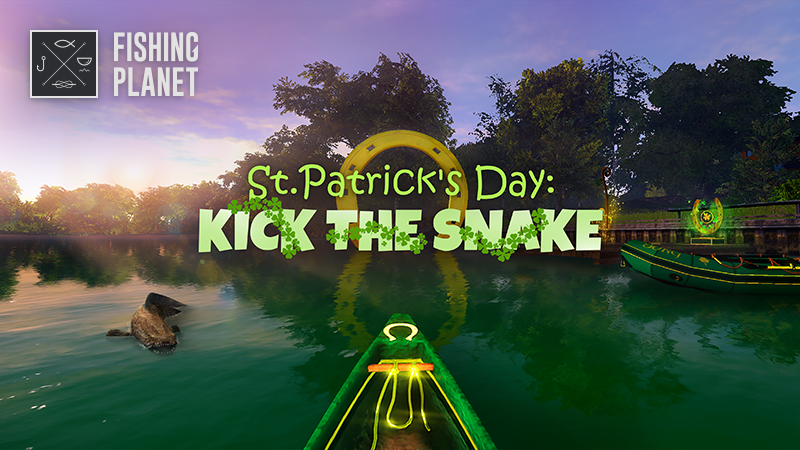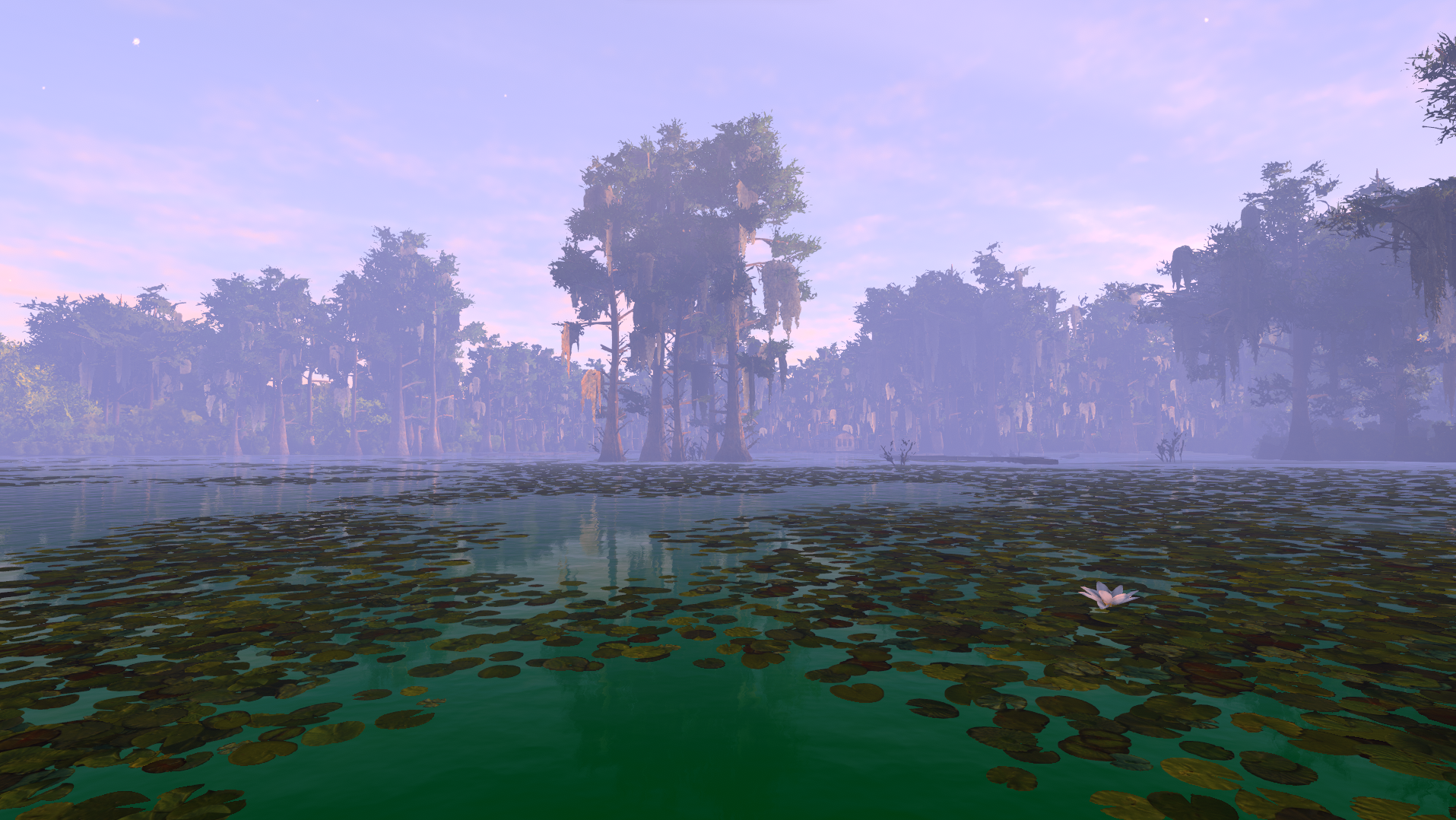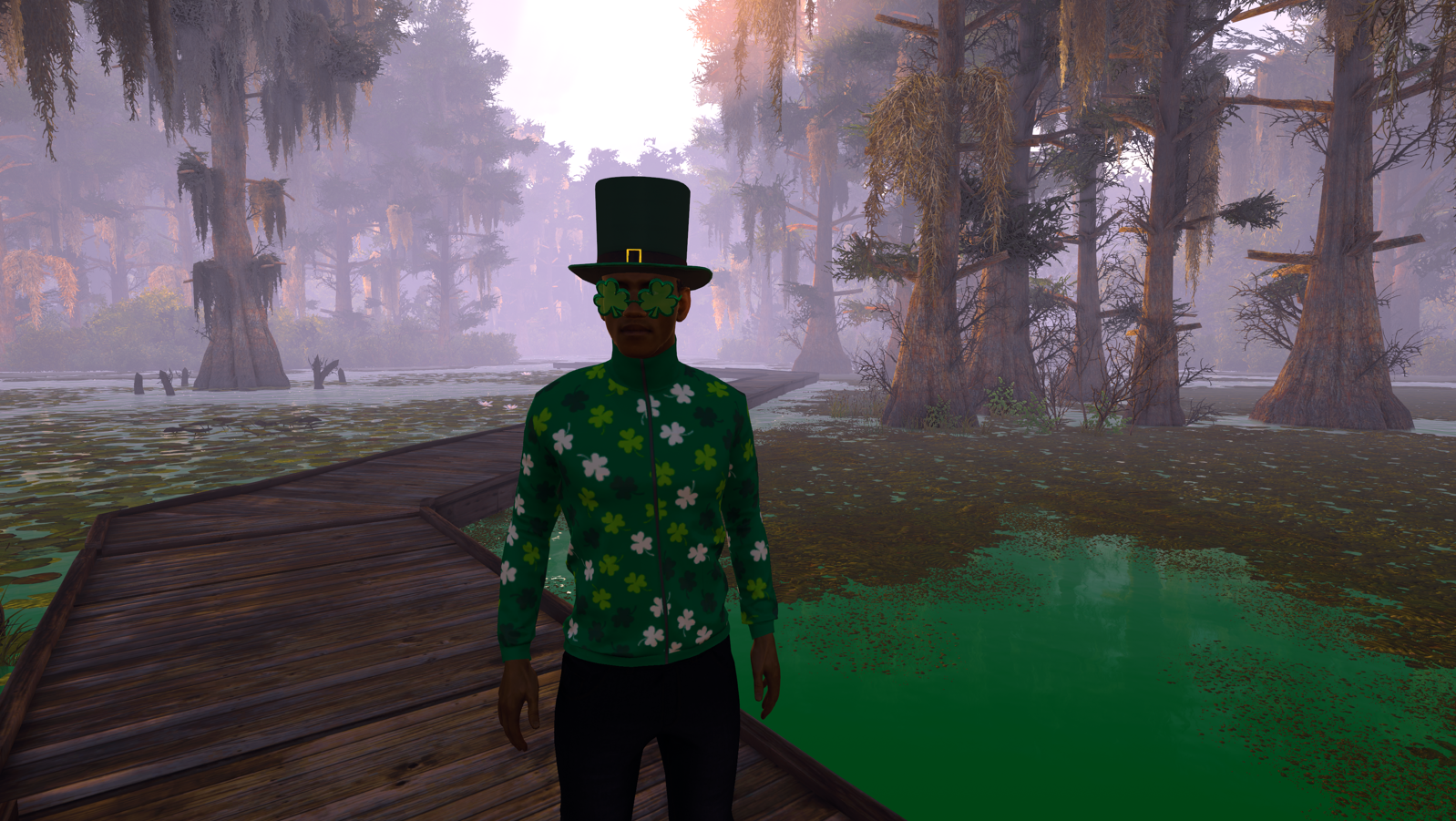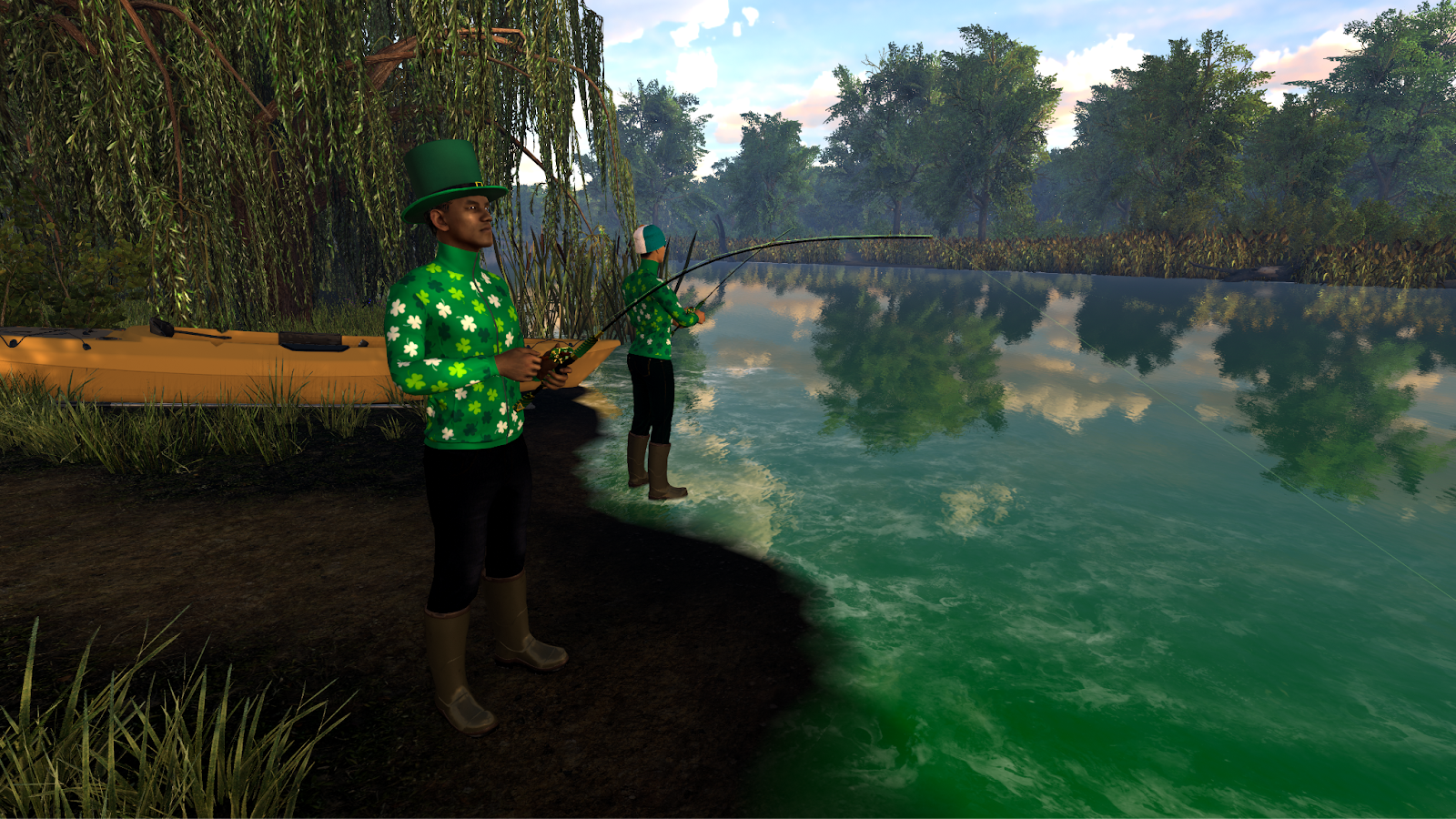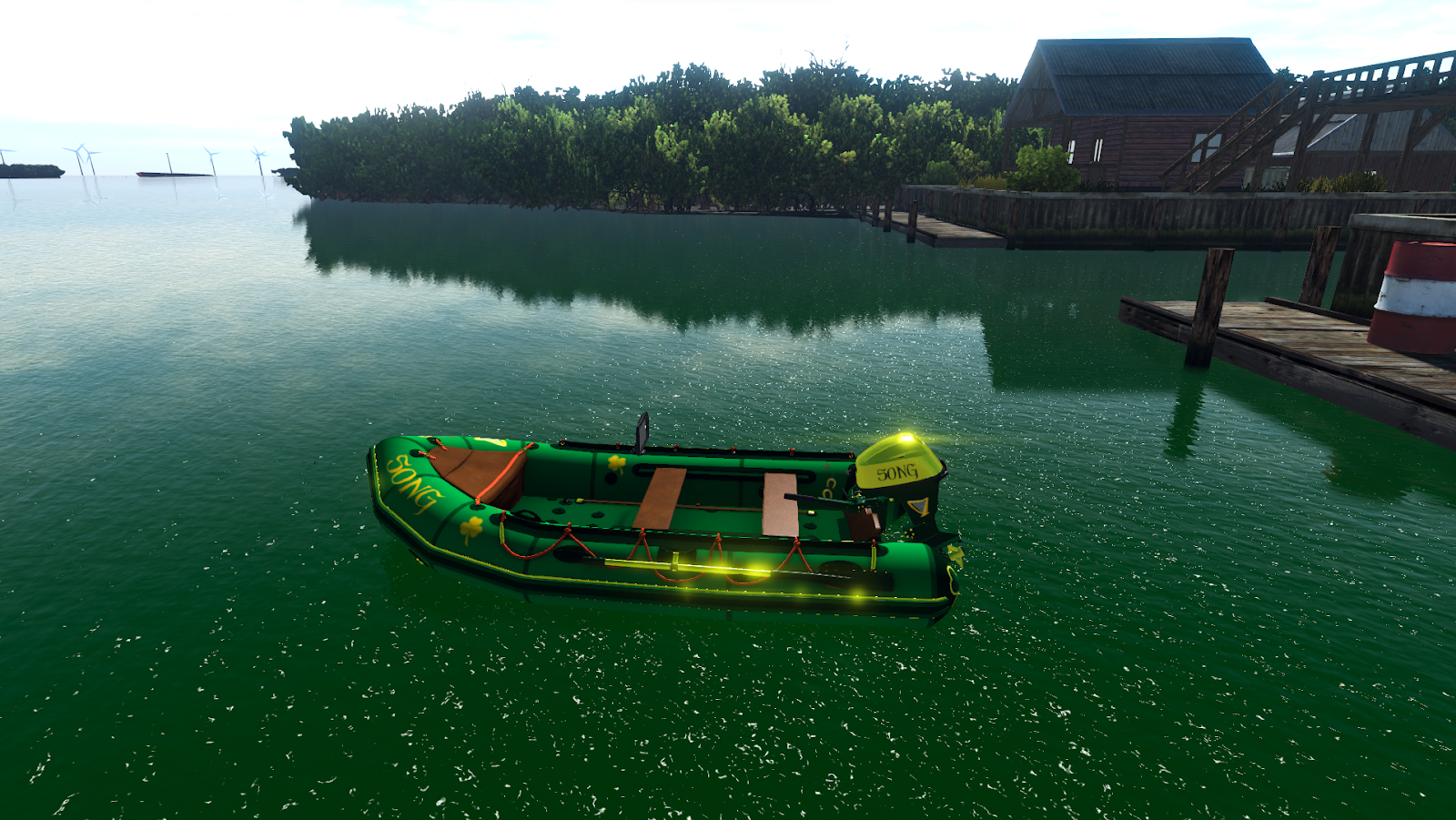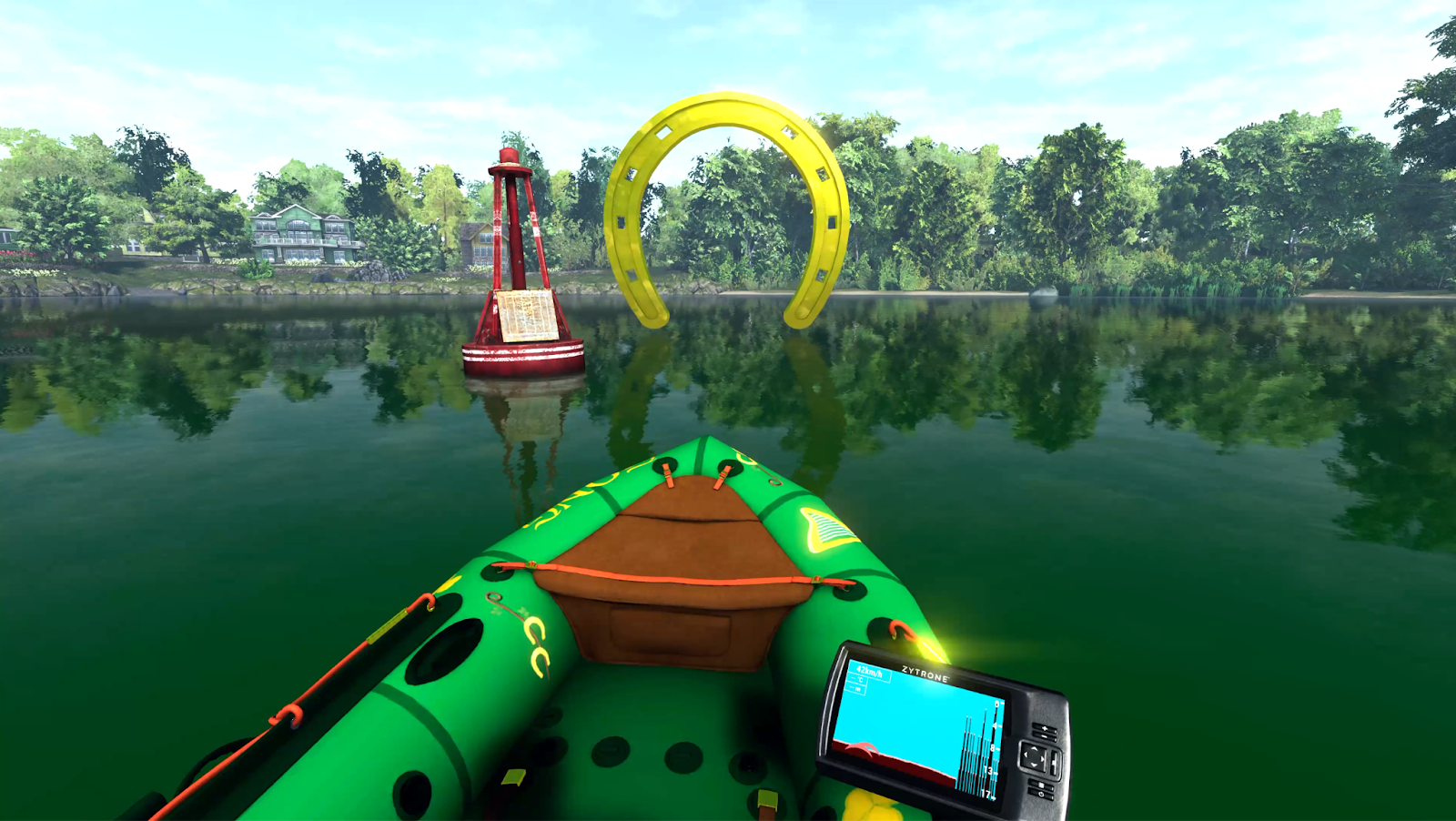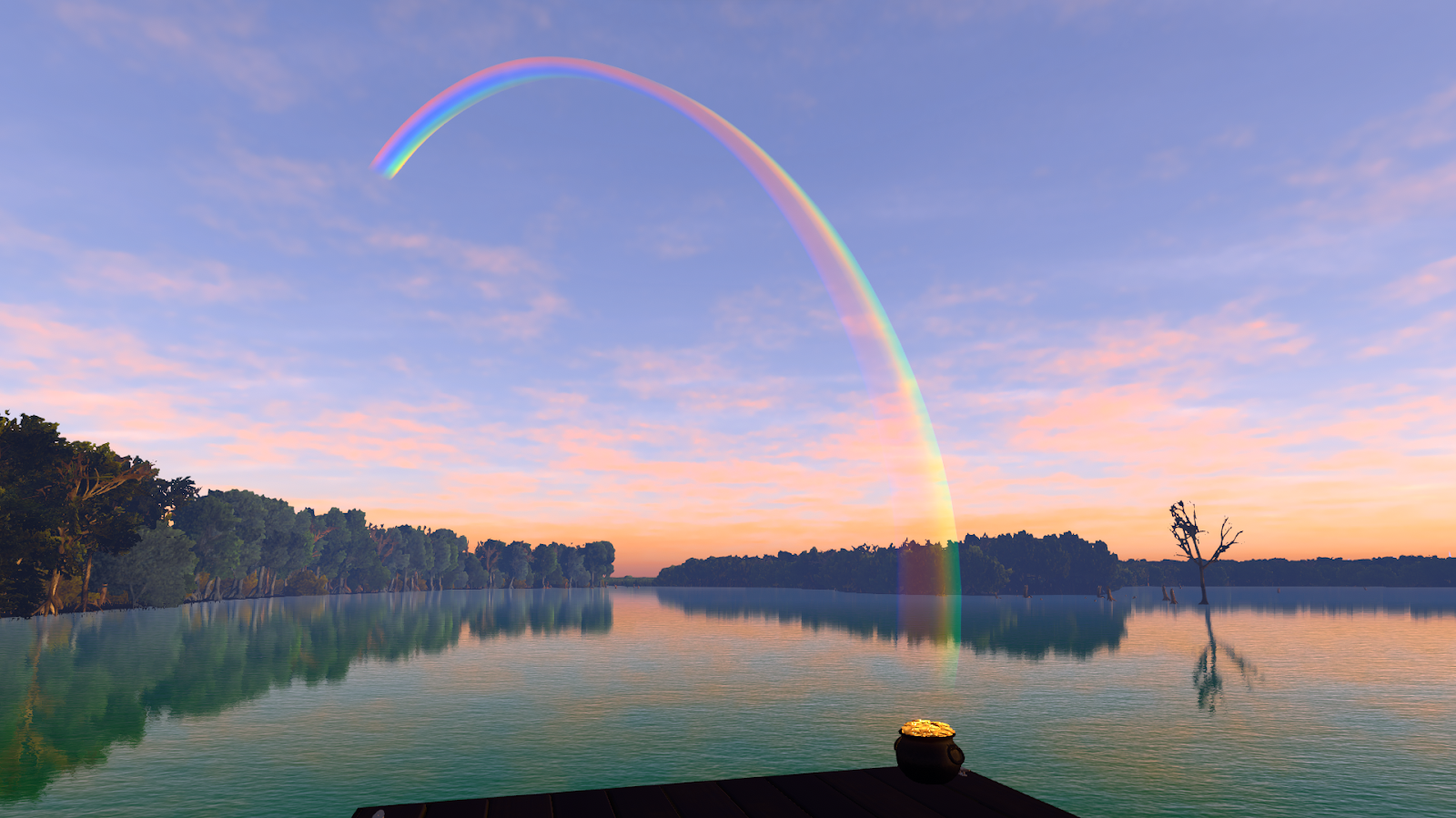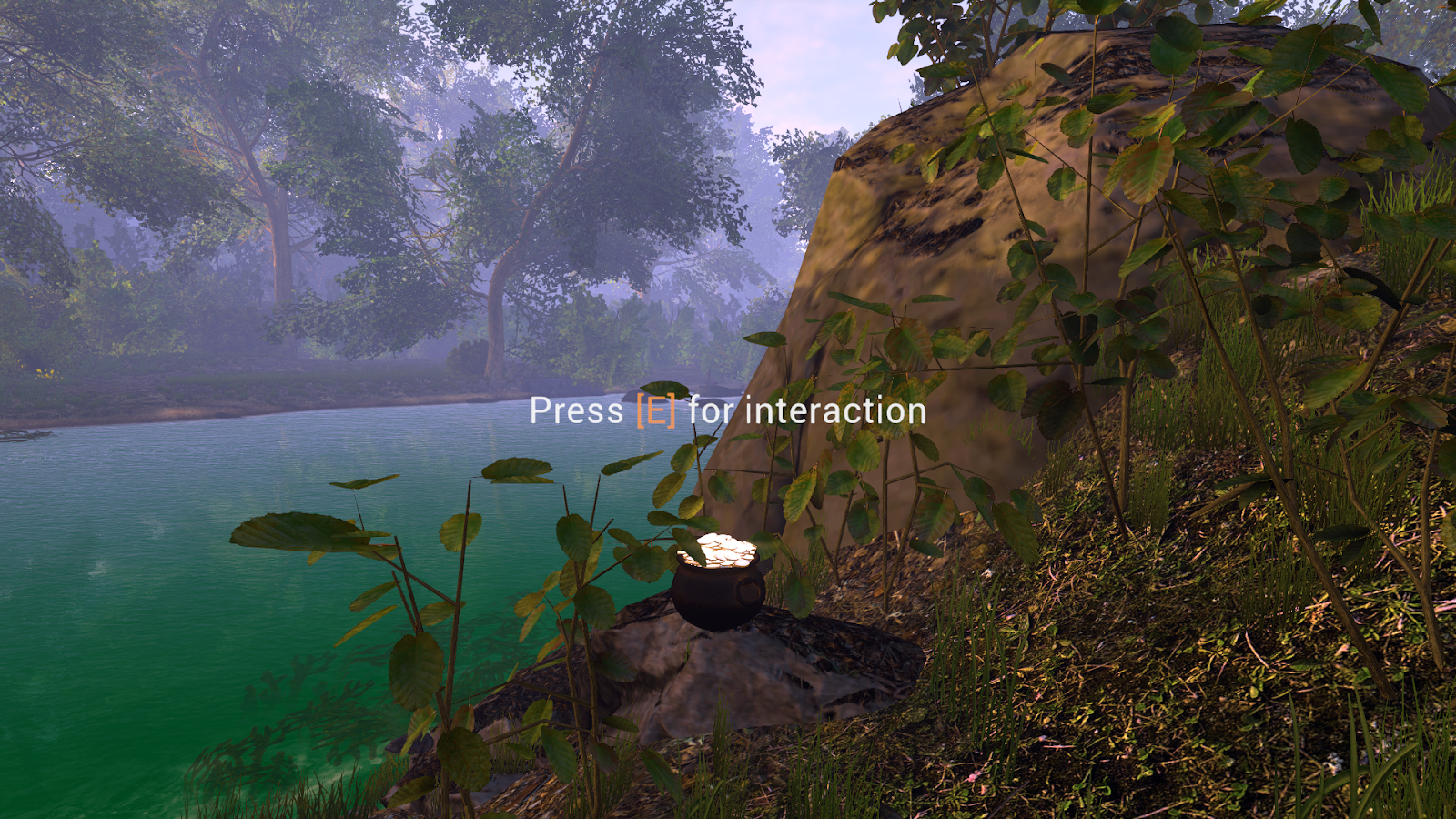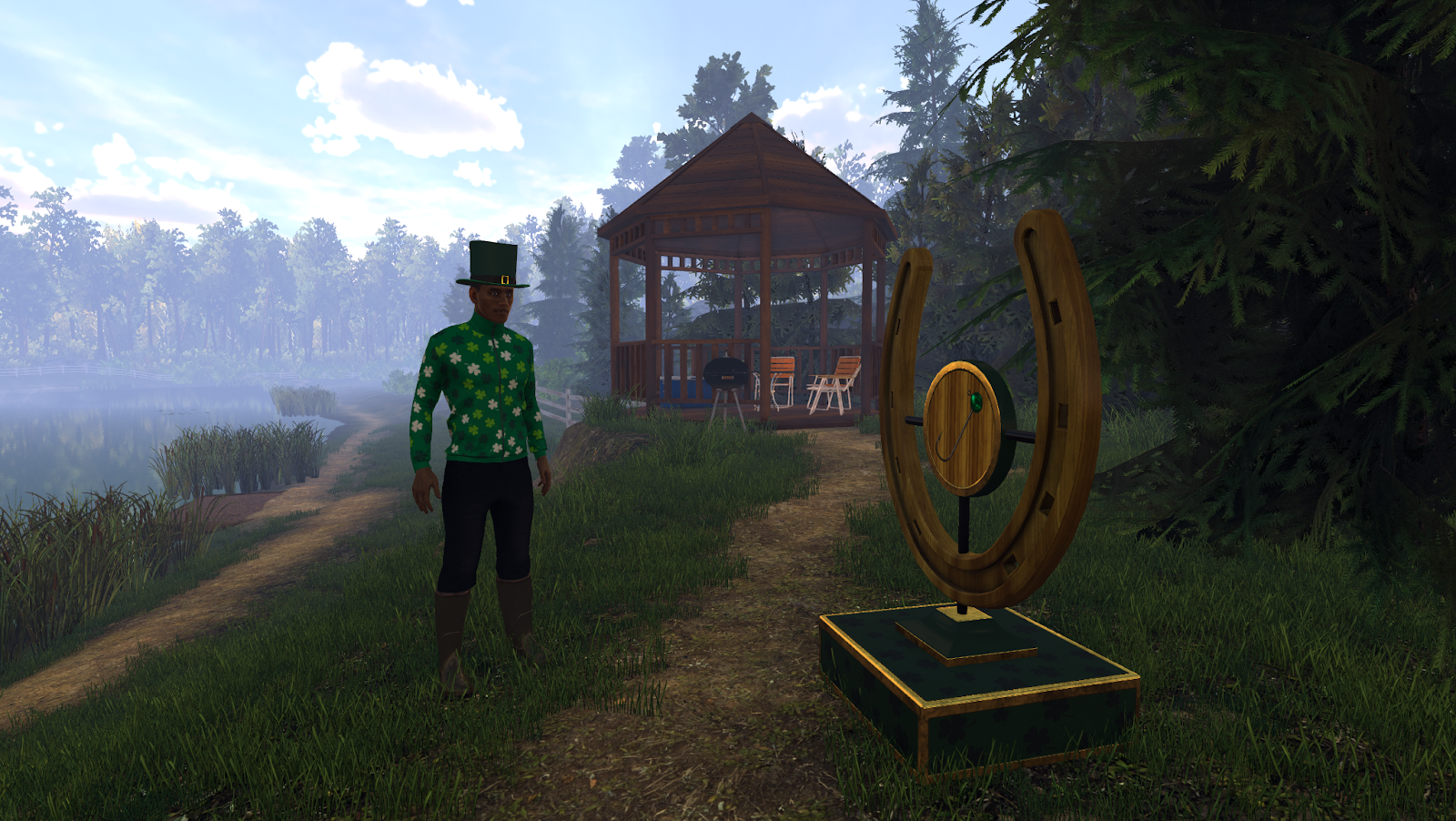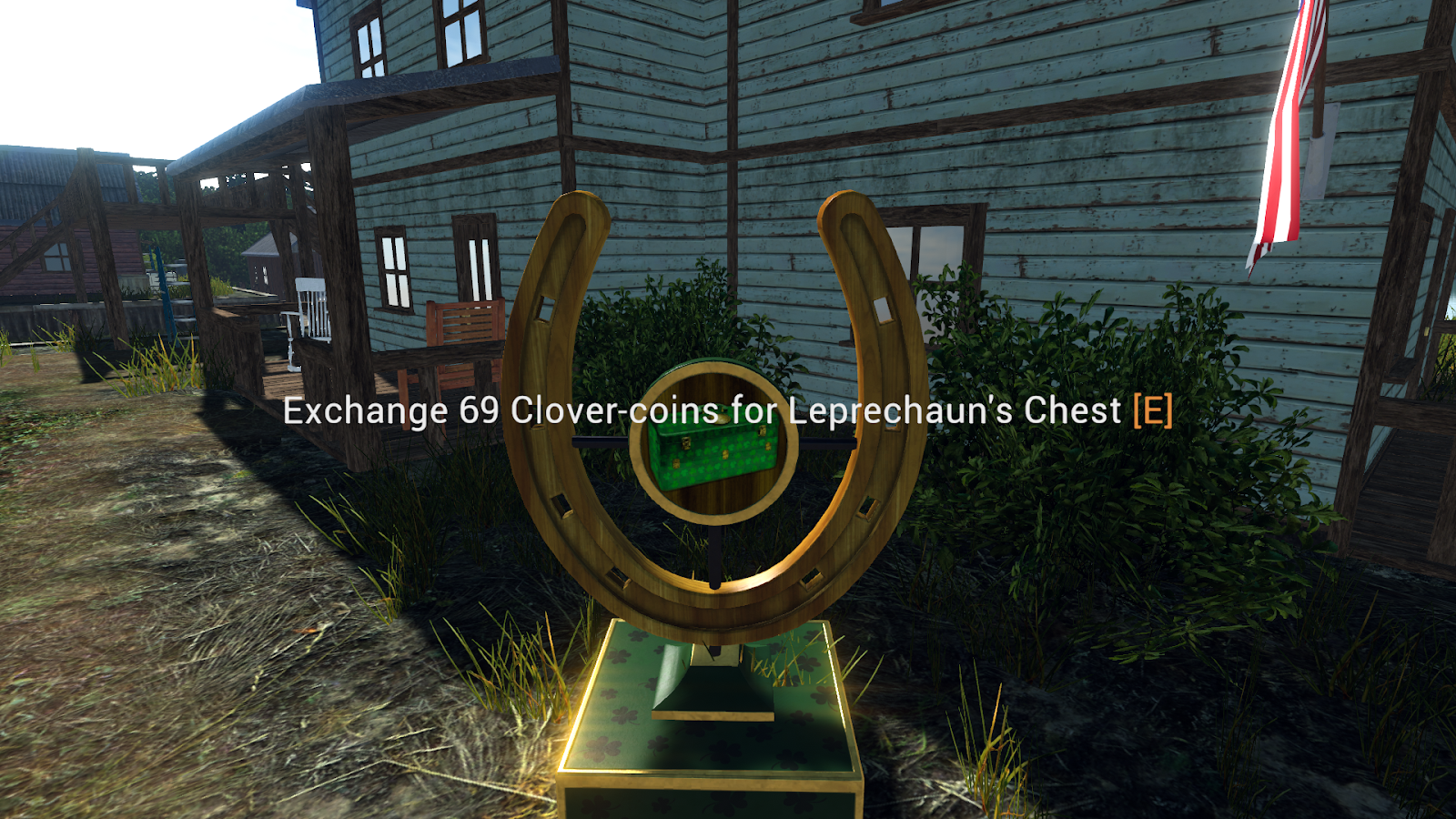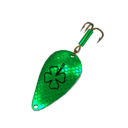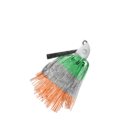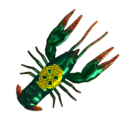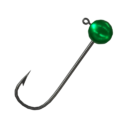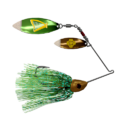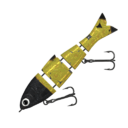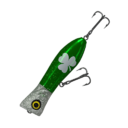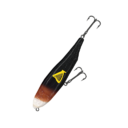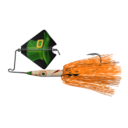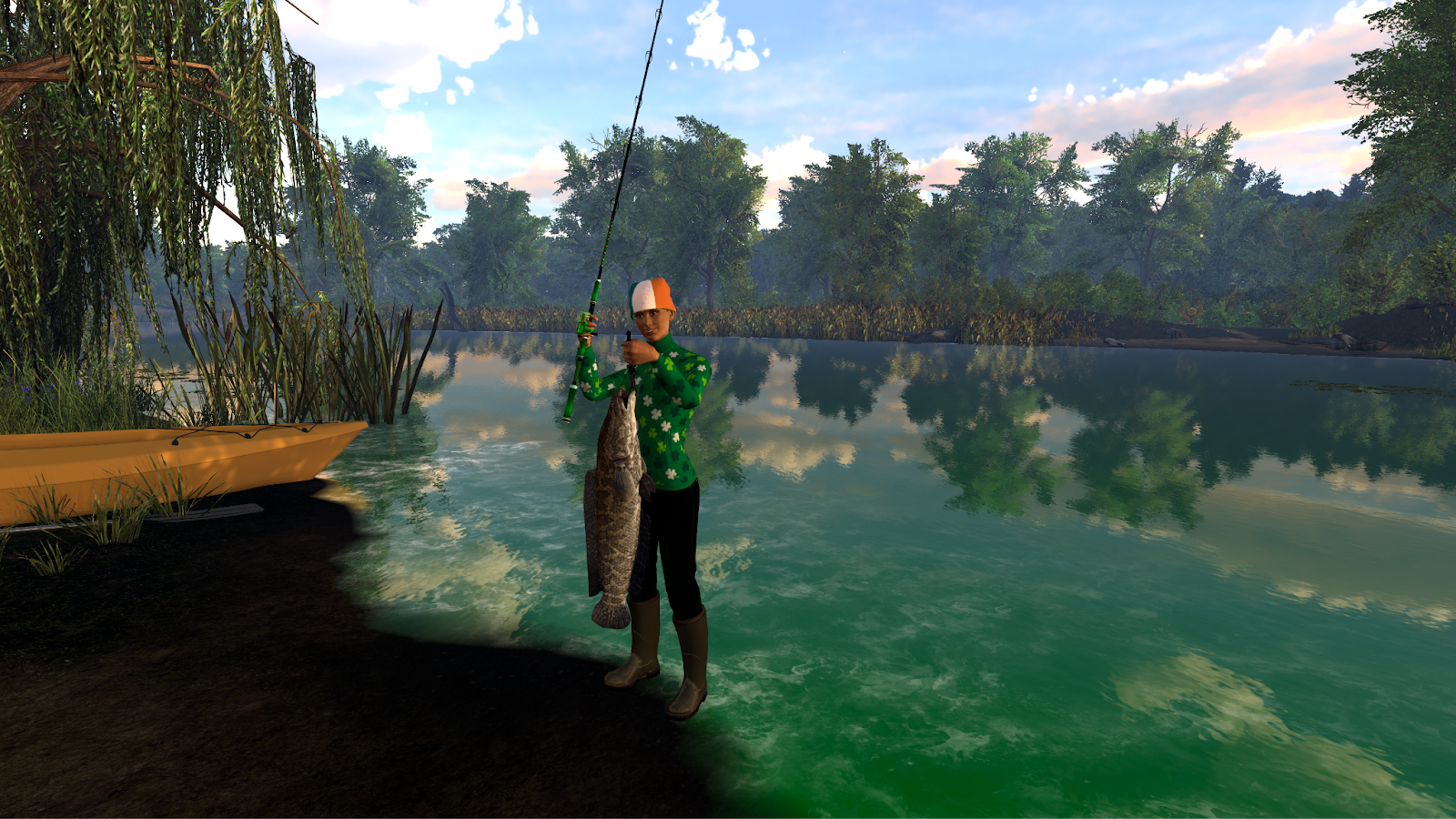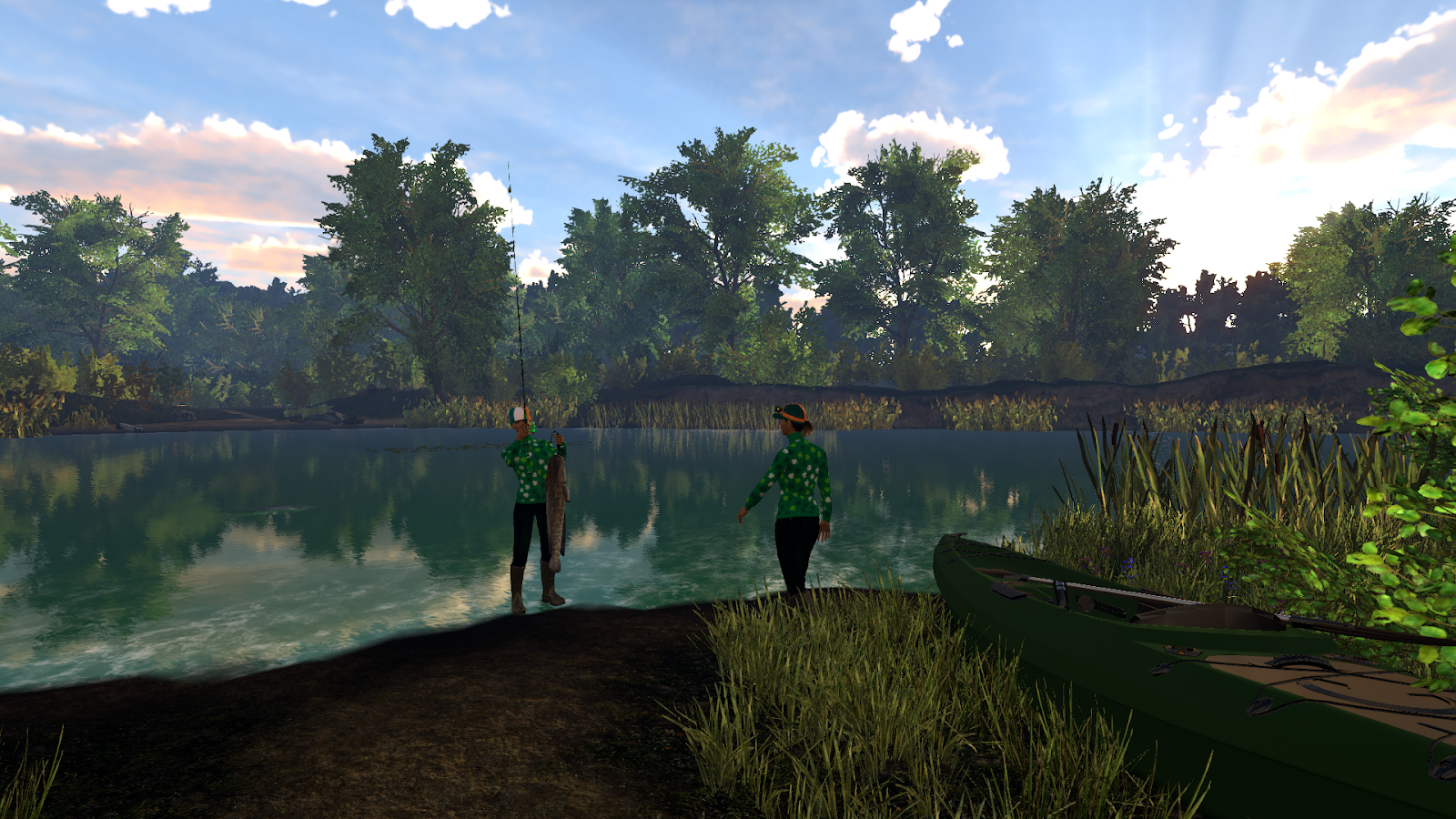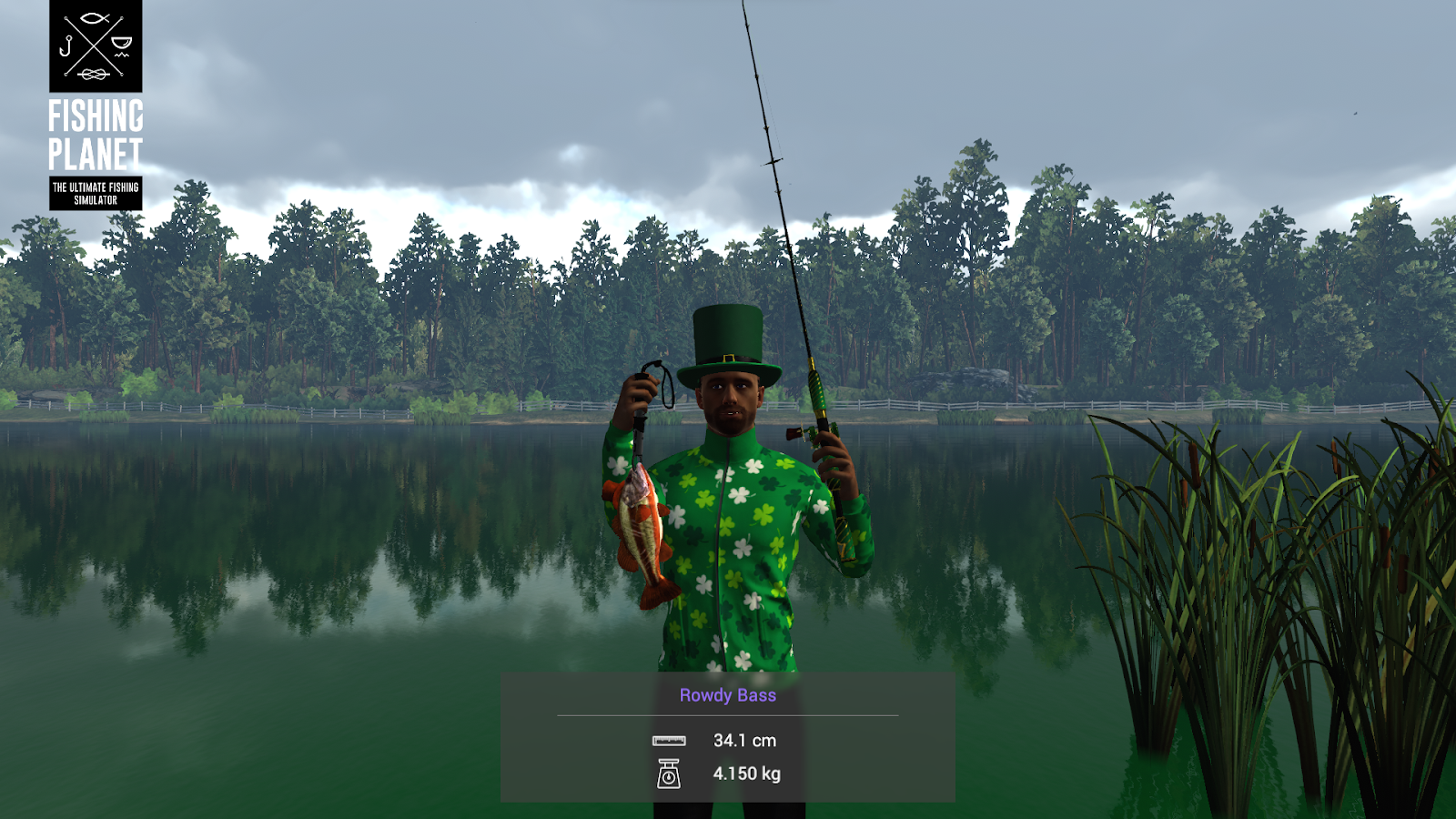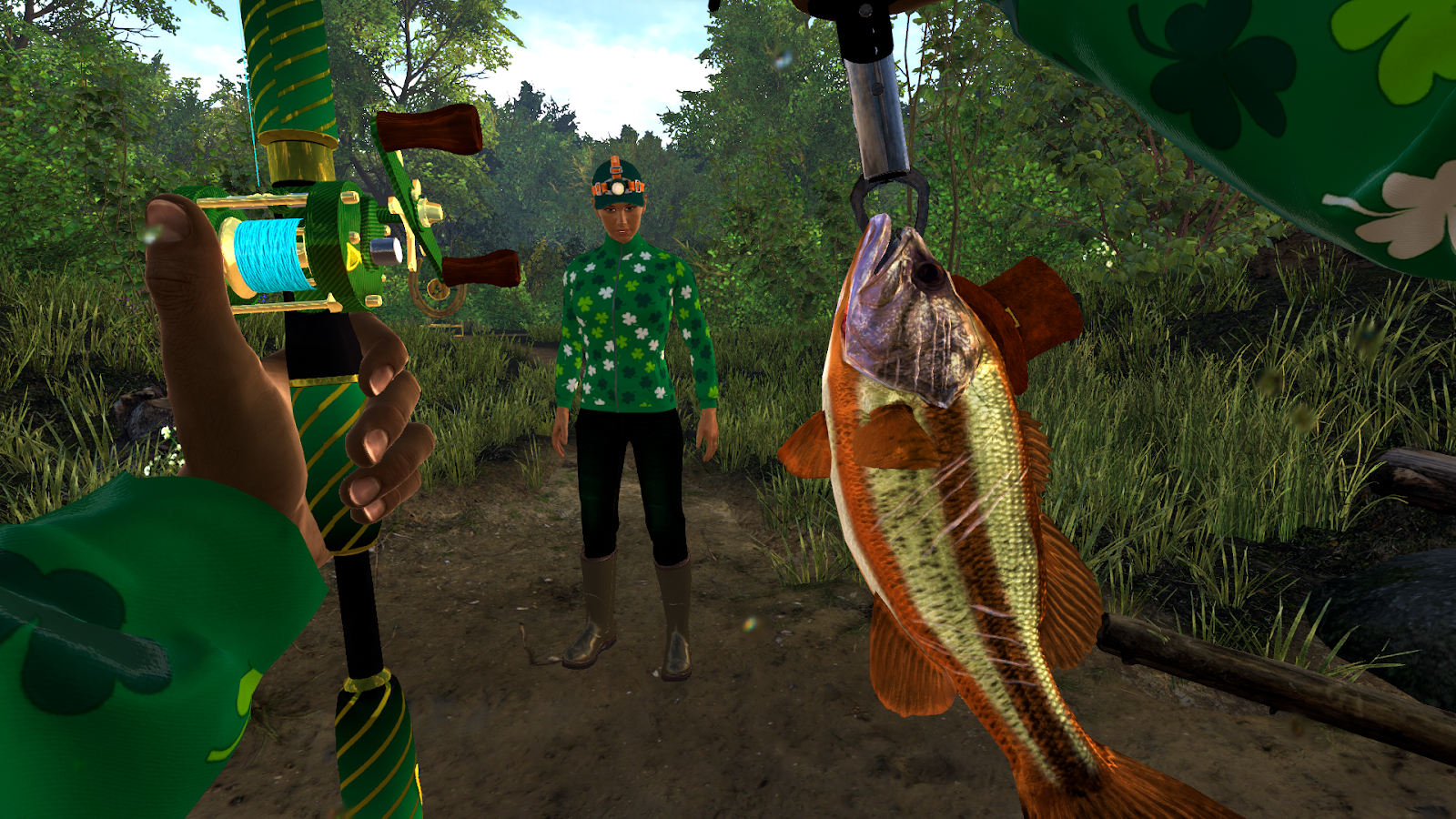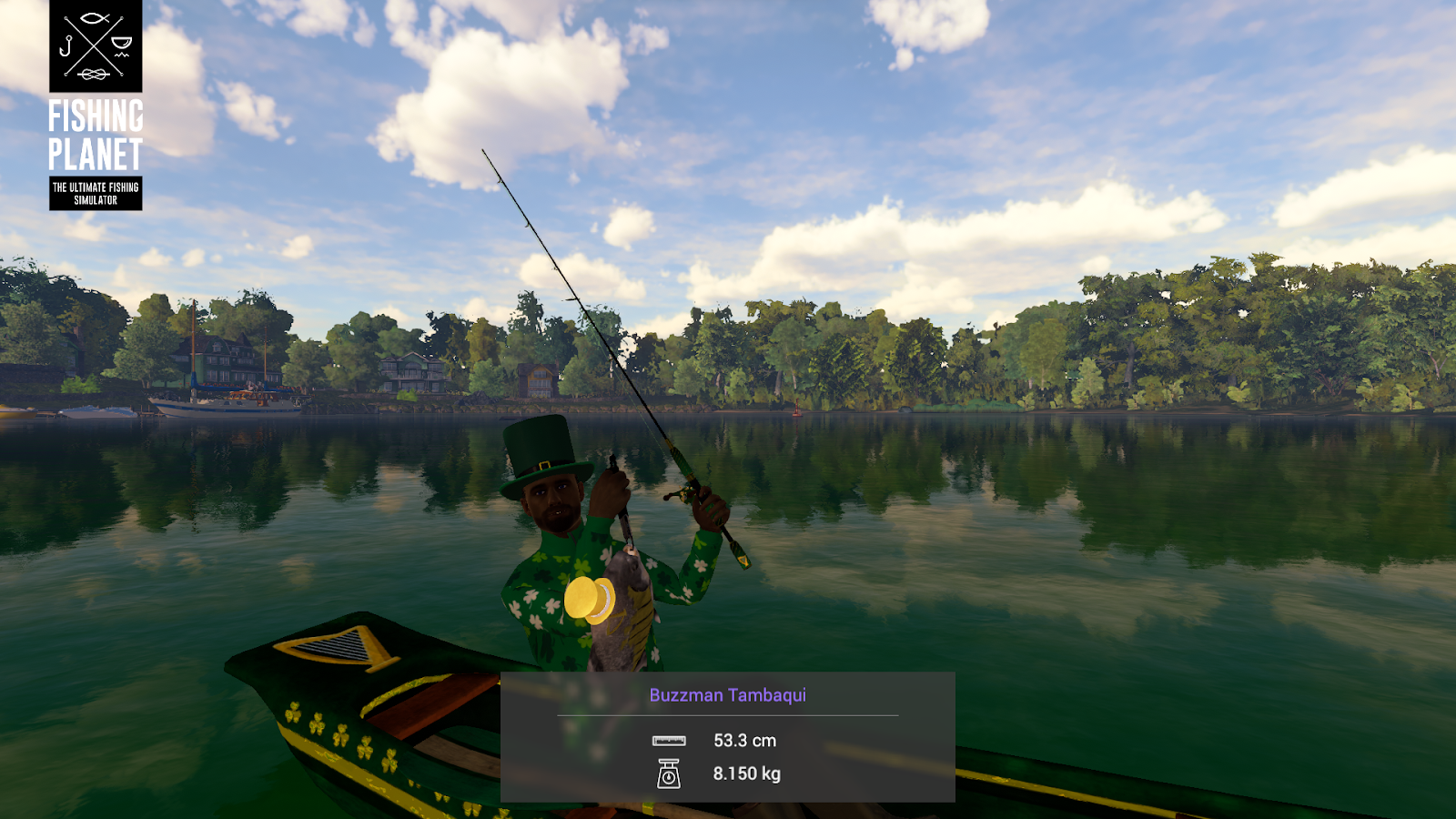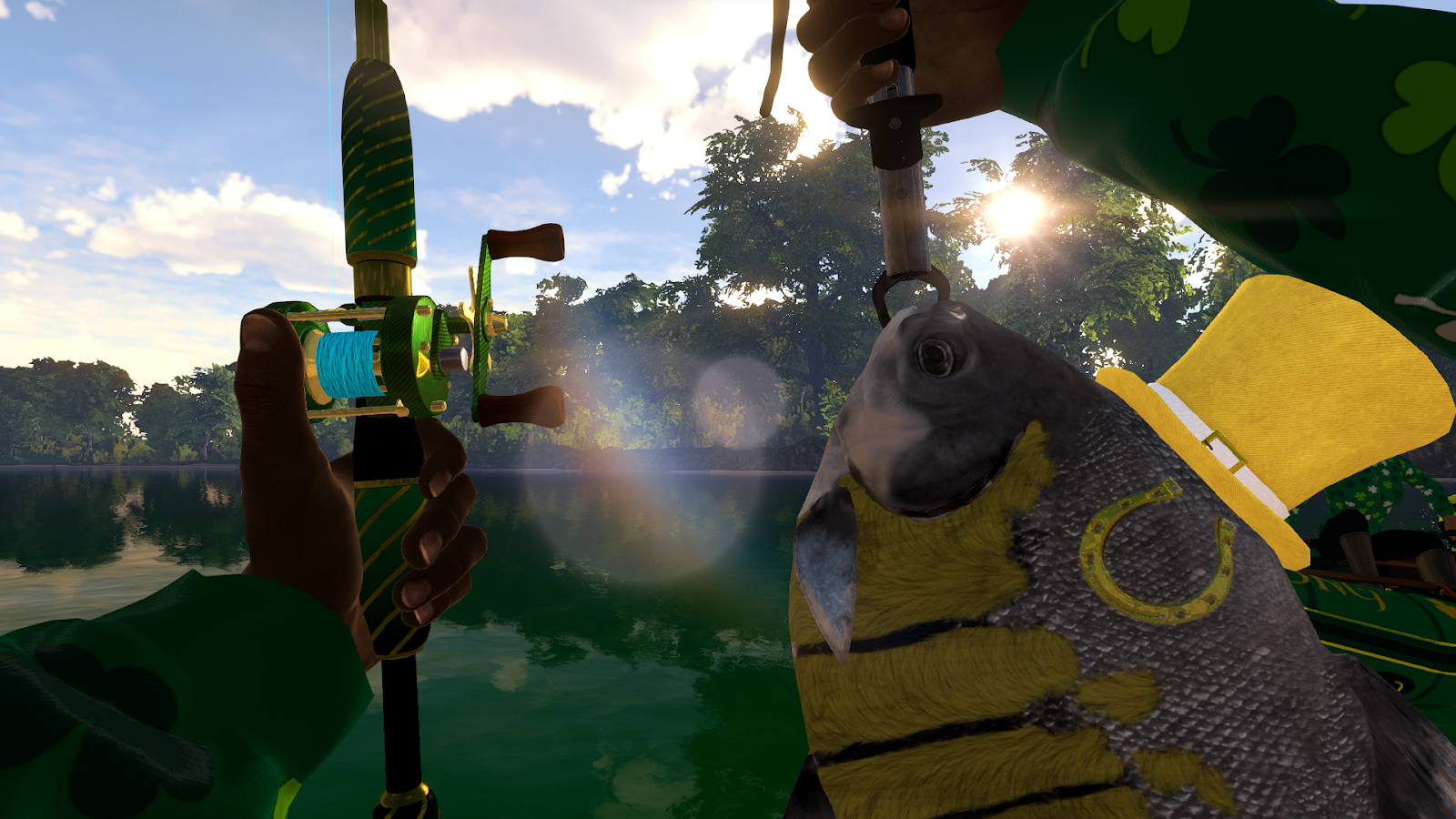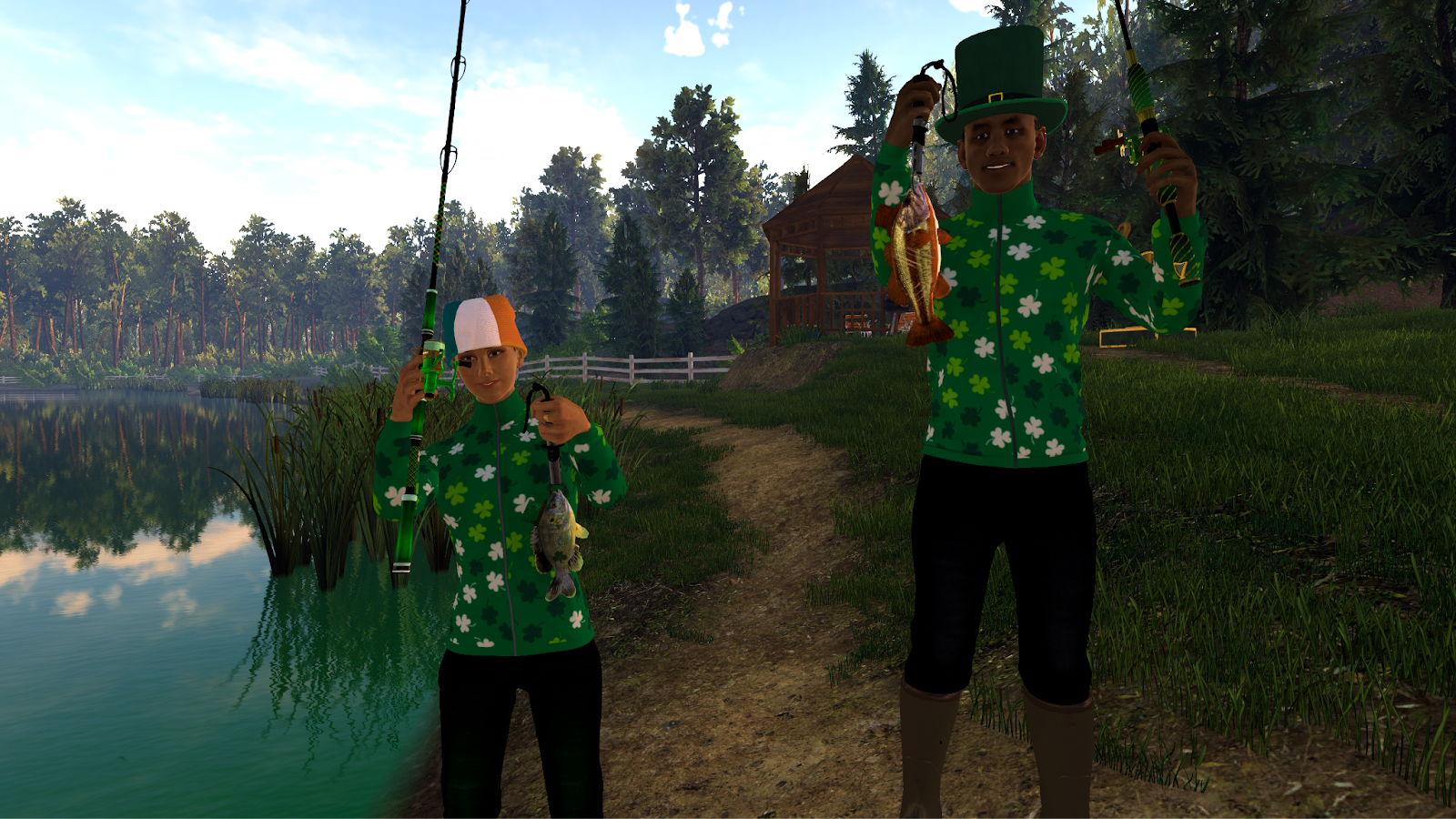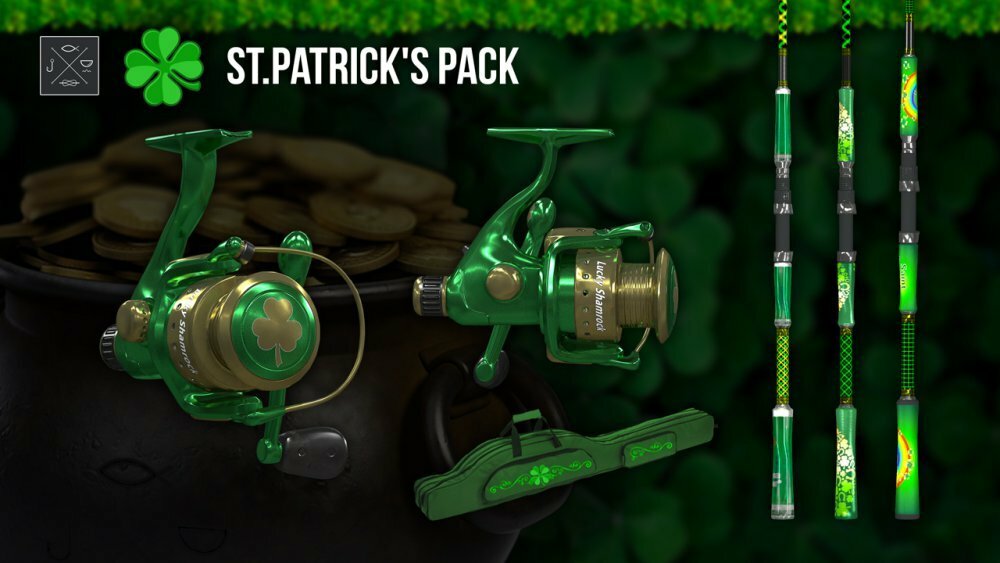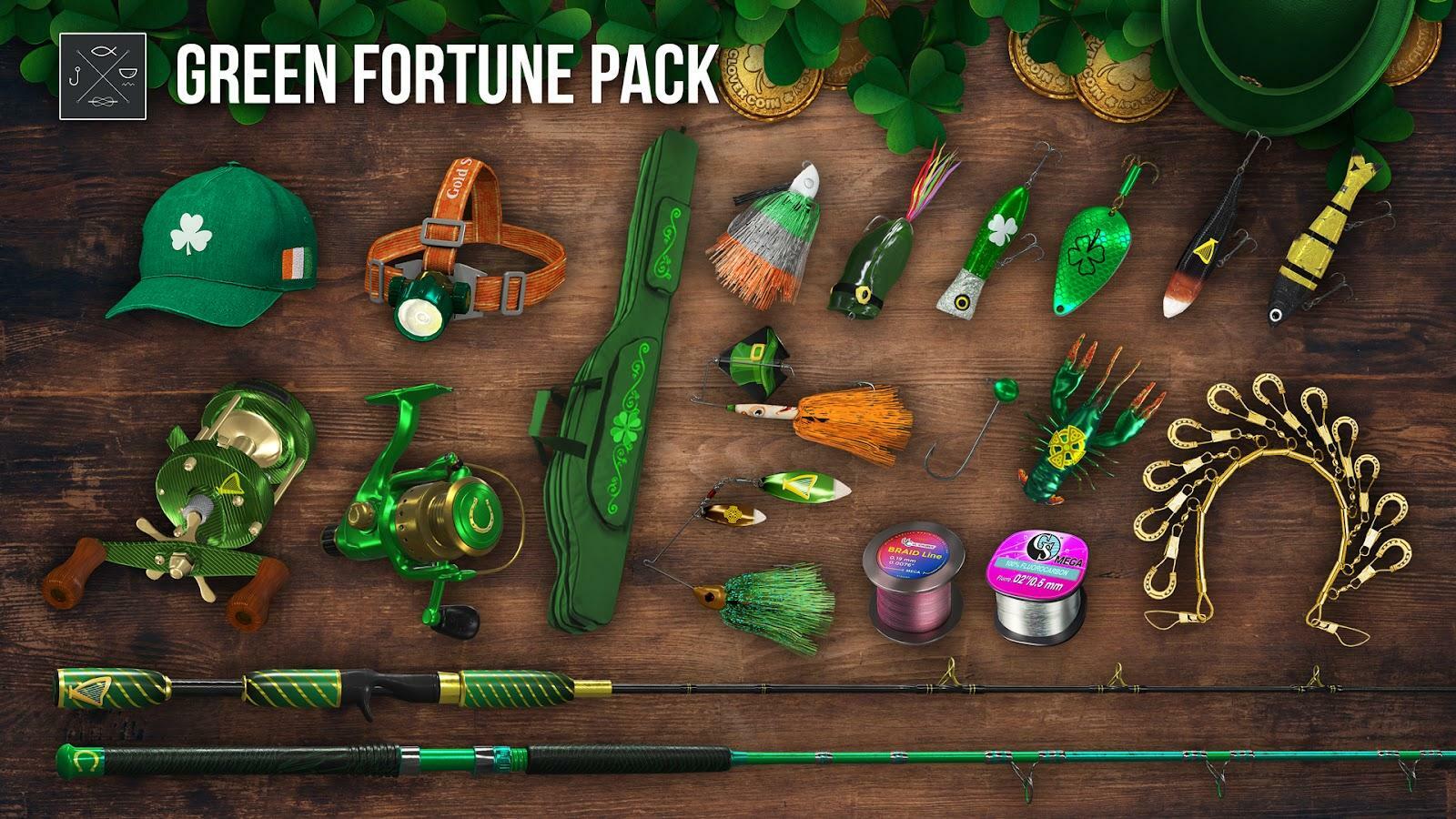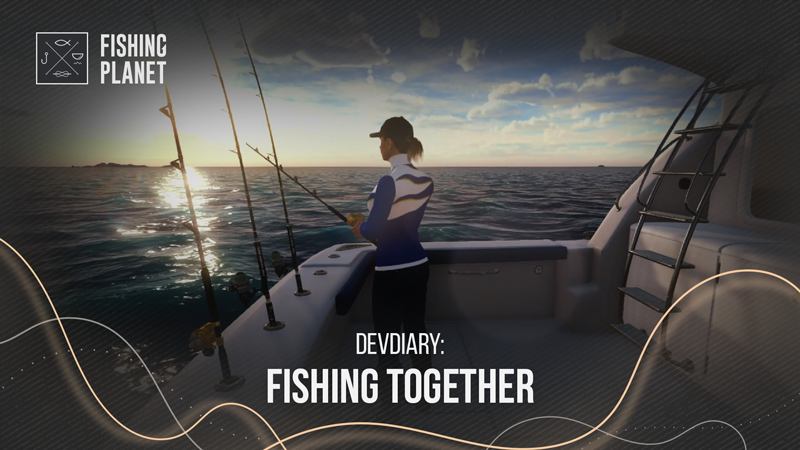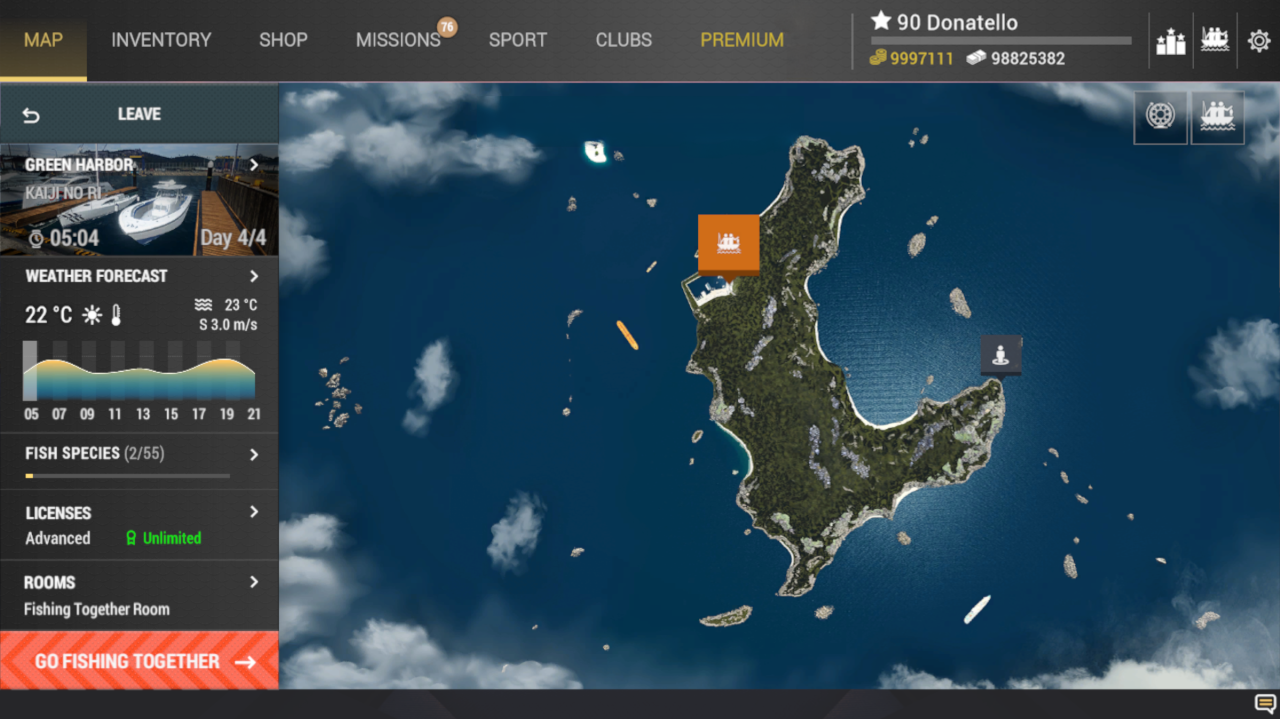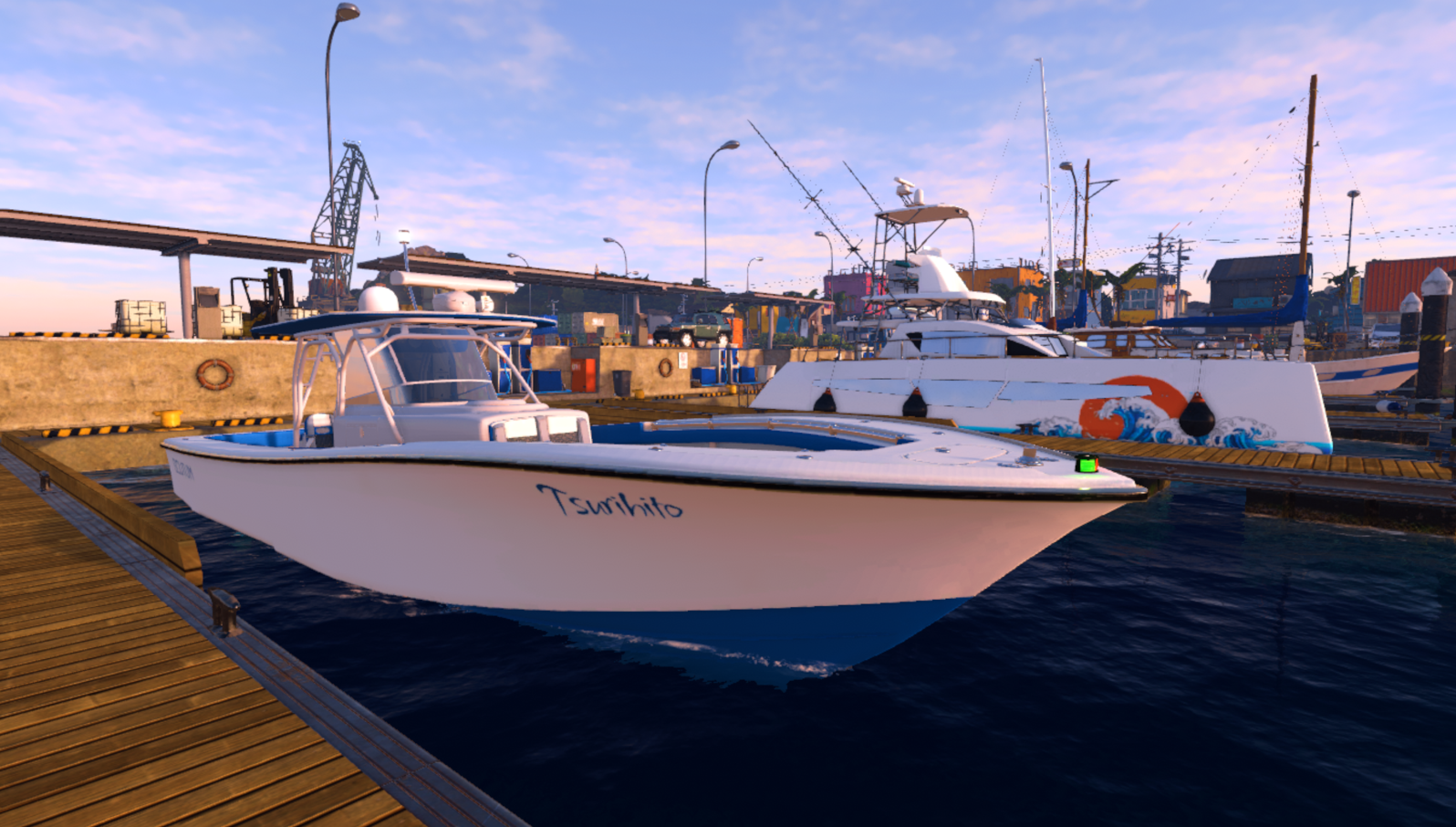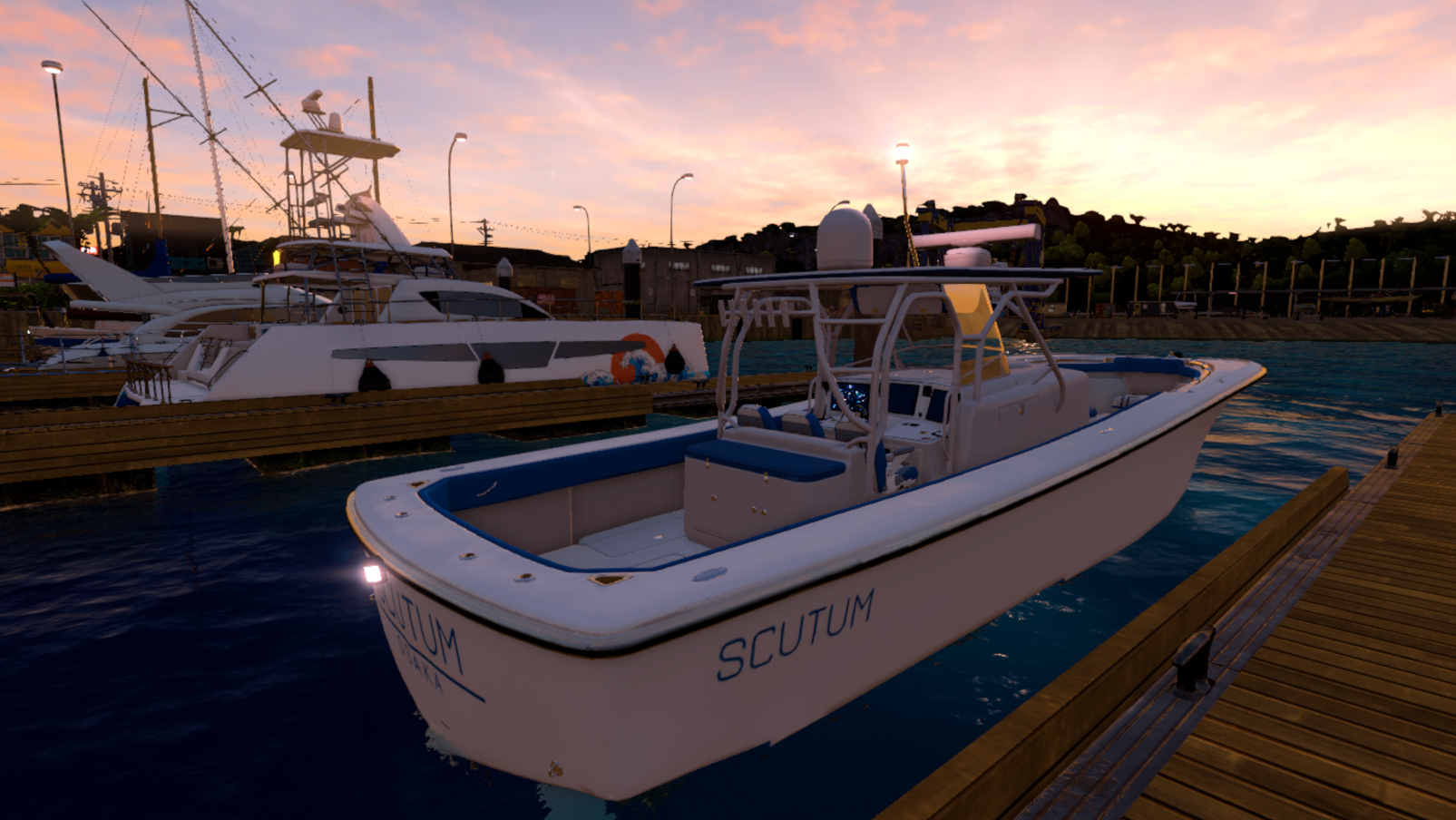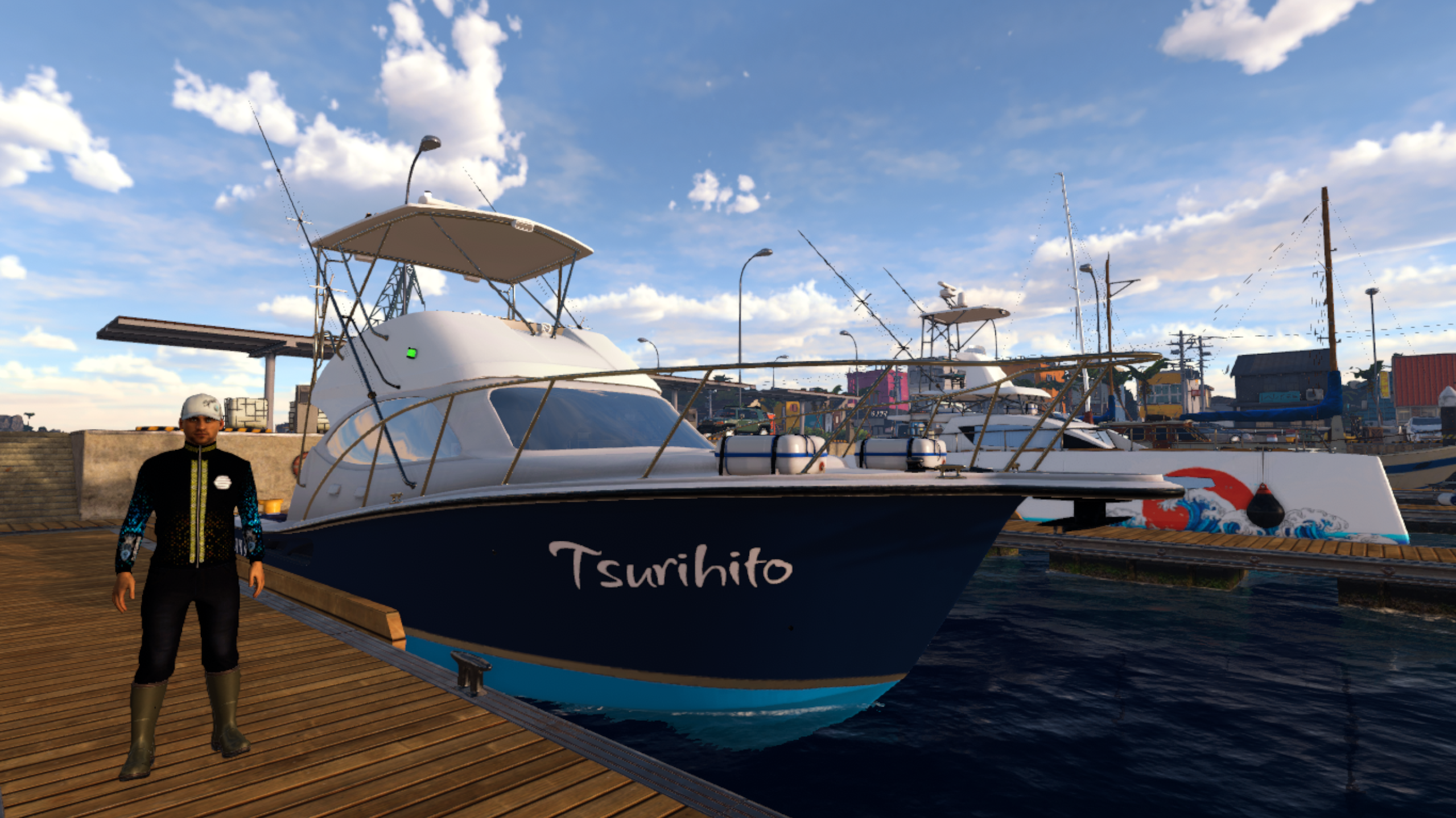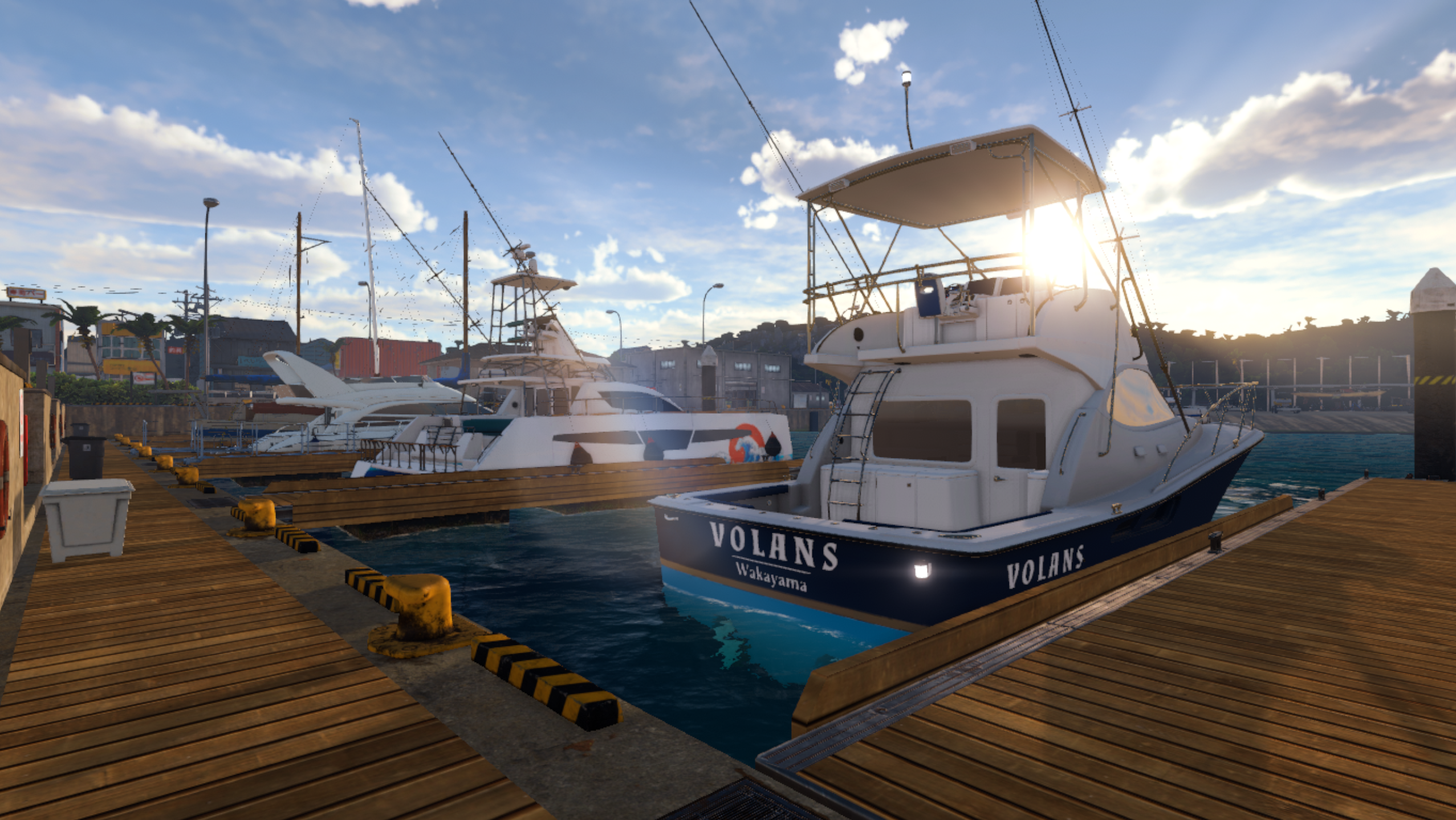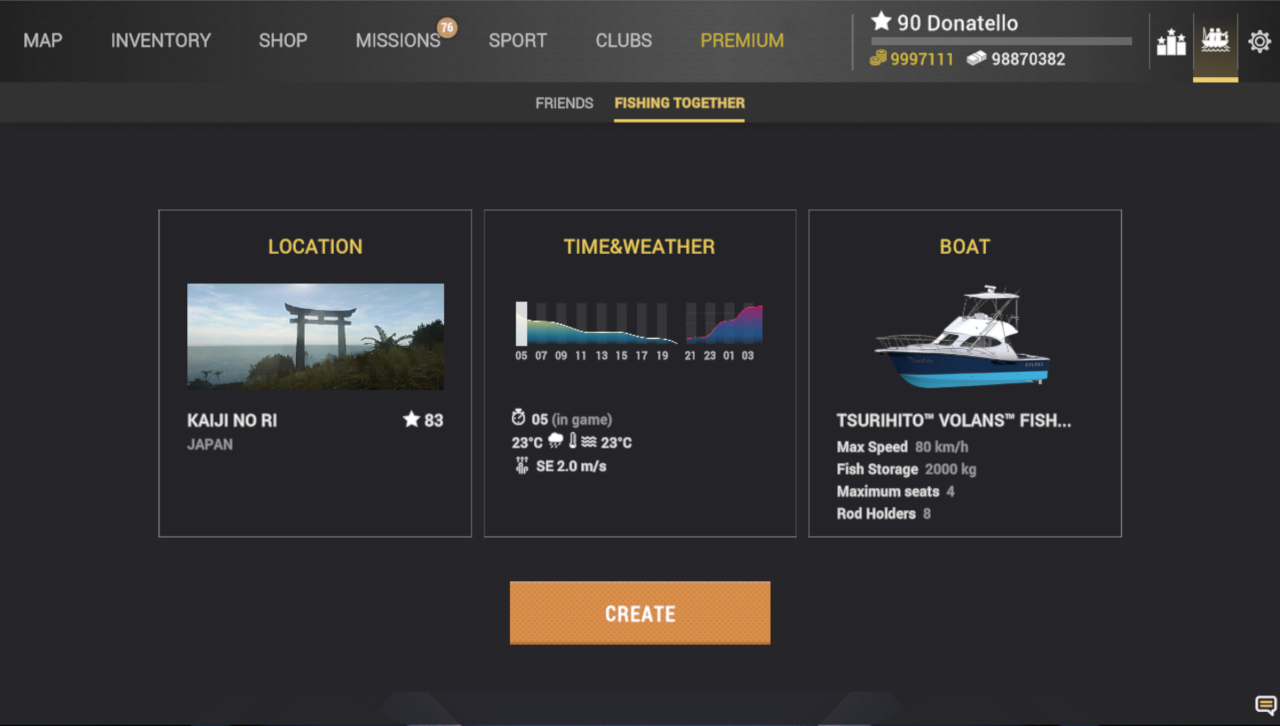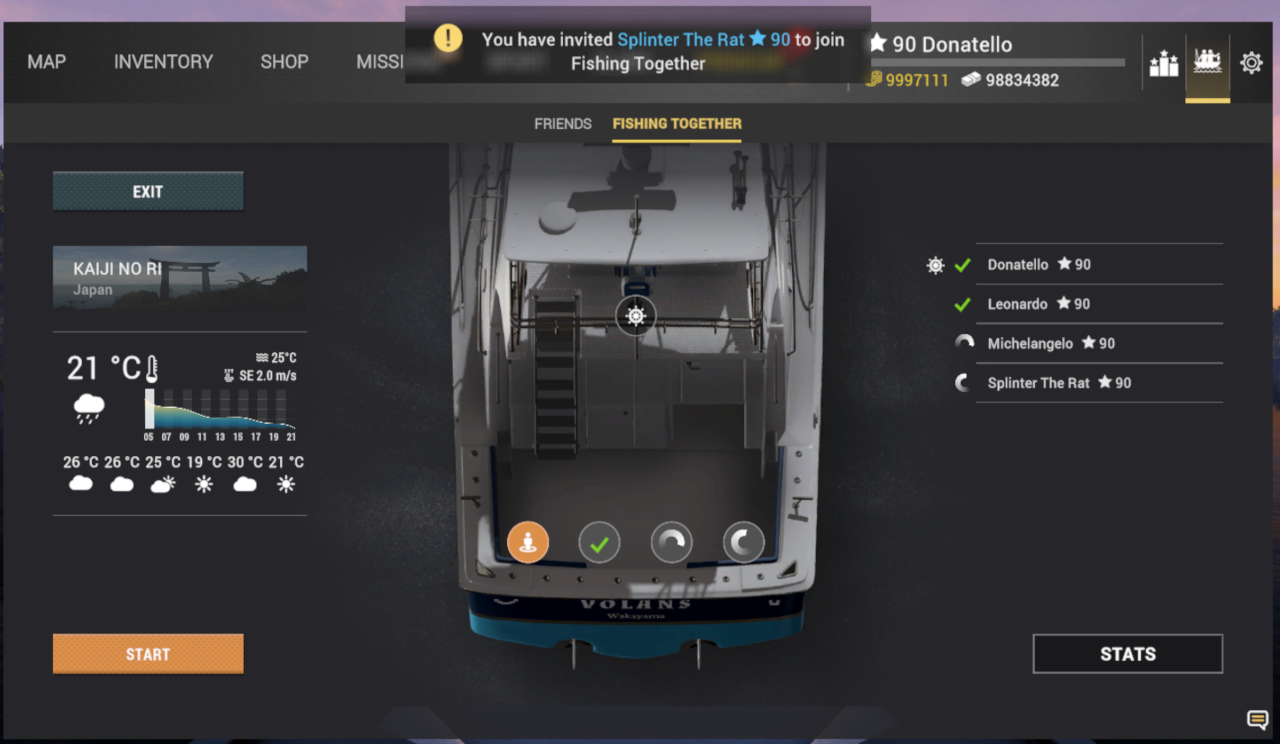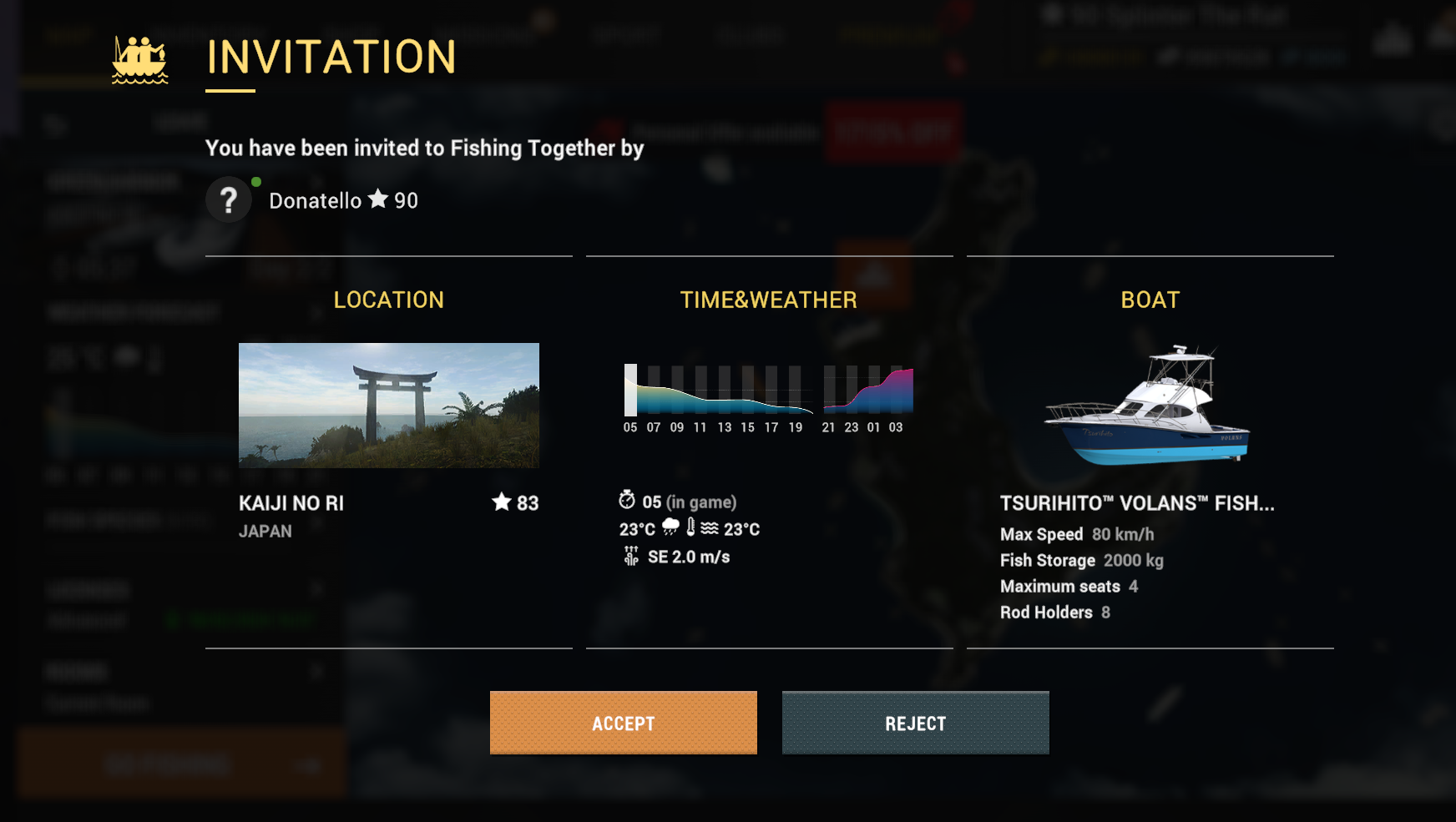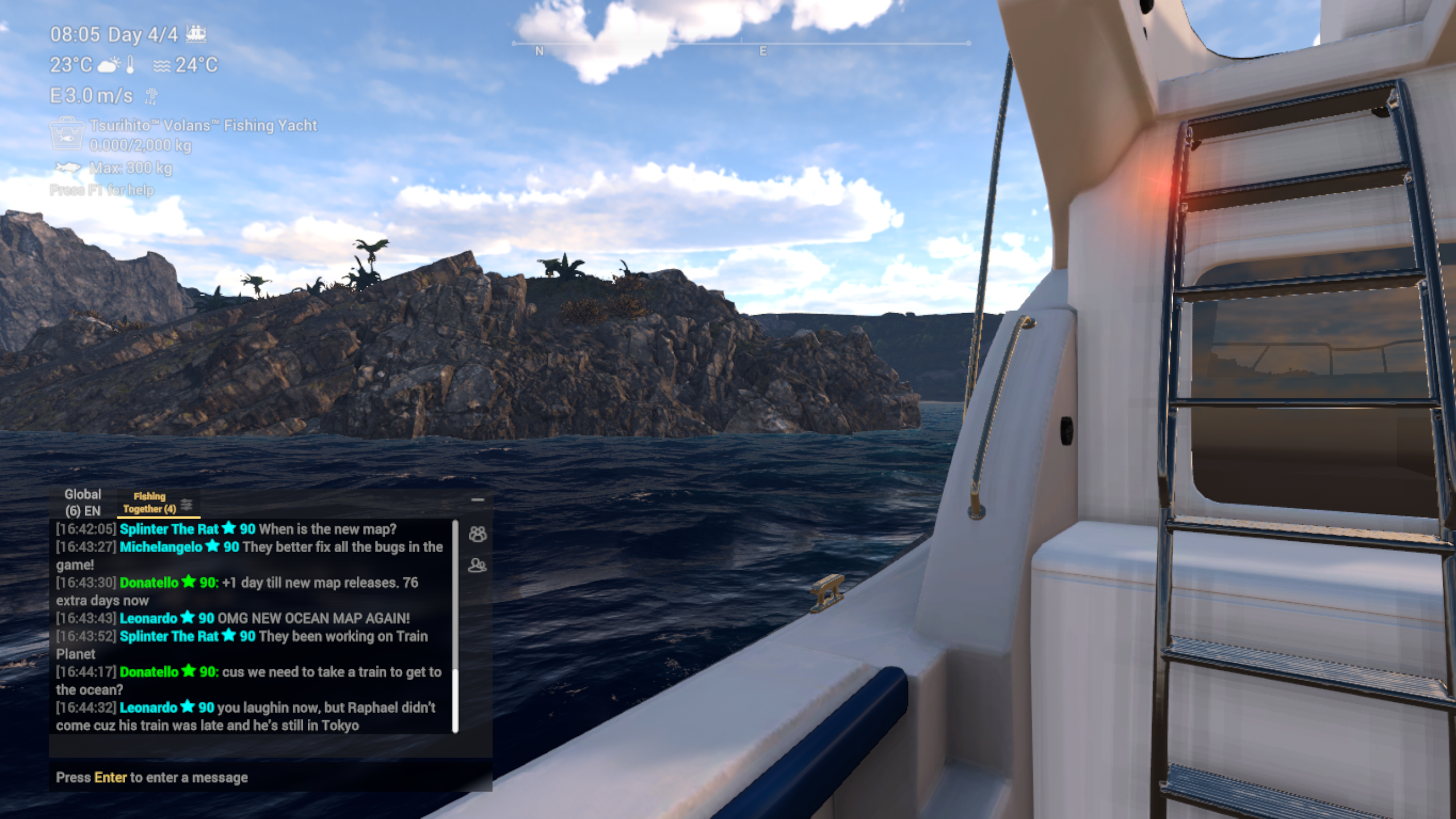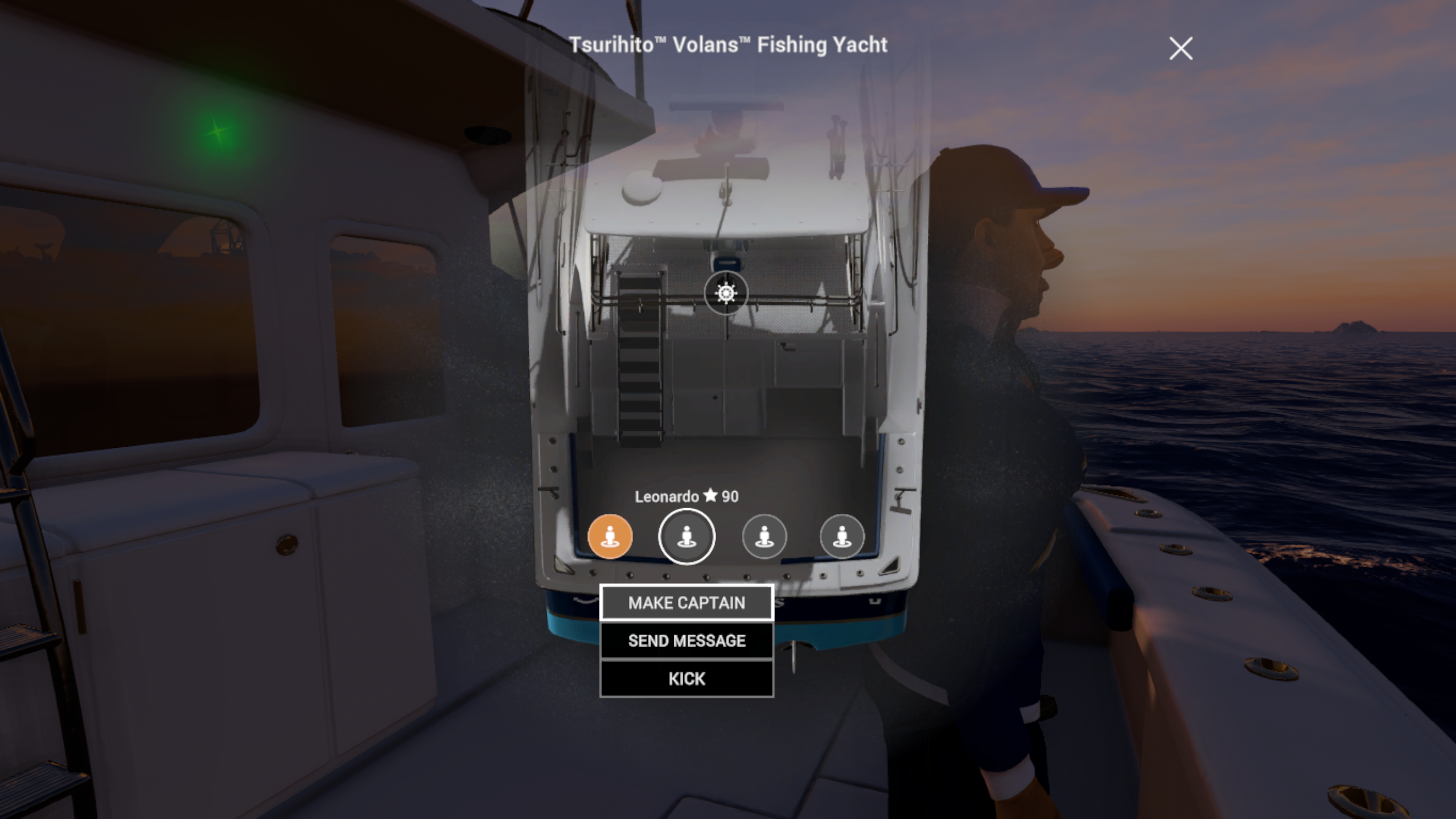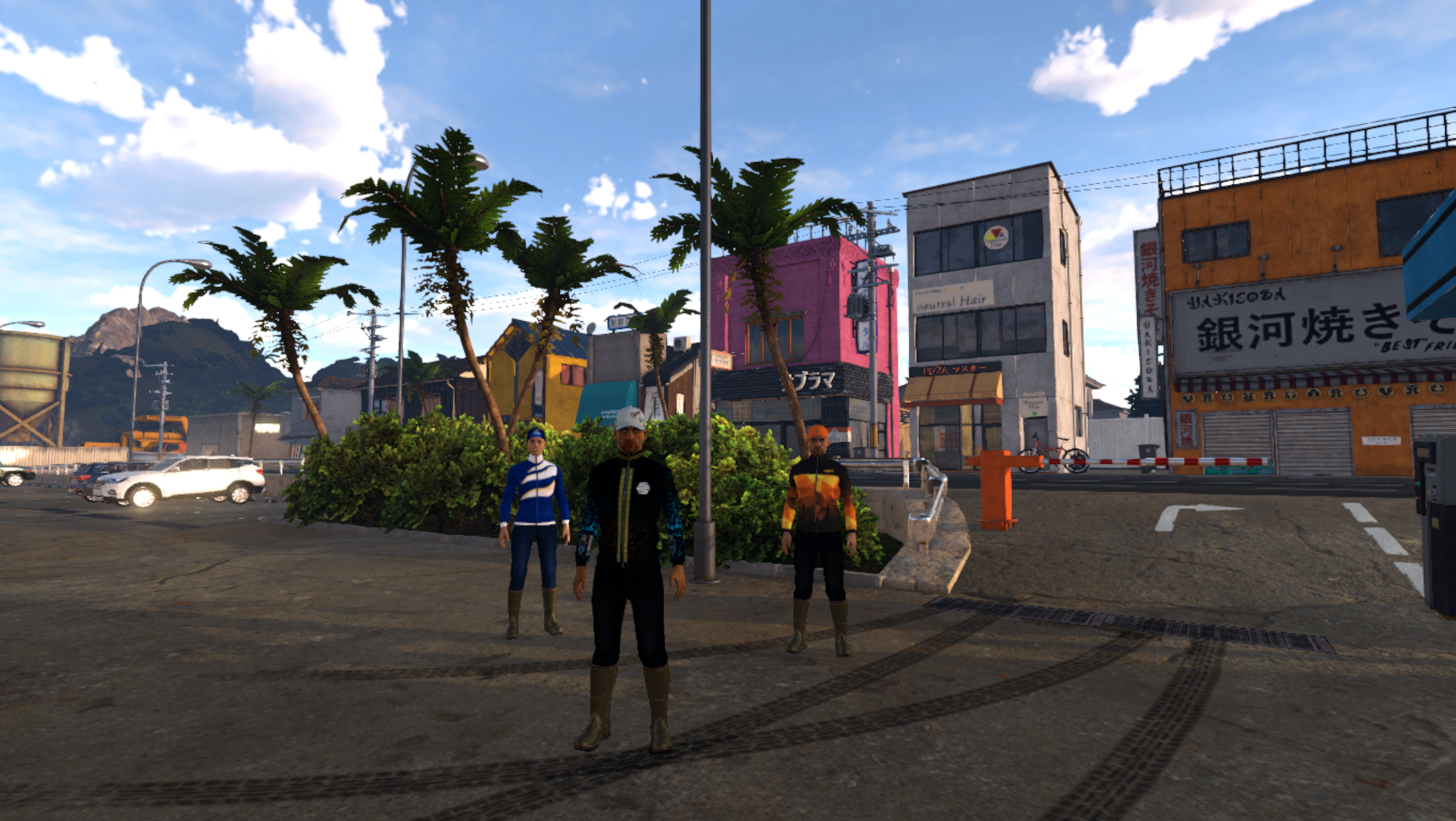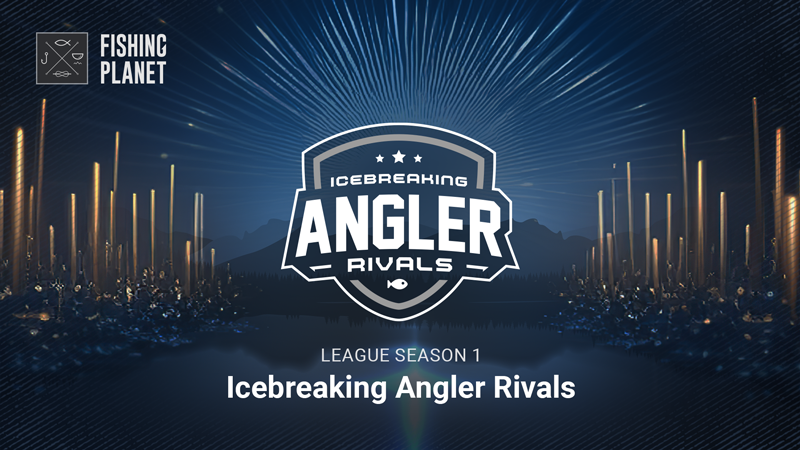
Apr 4, 2024
Fishing Planet - Dennis_FP
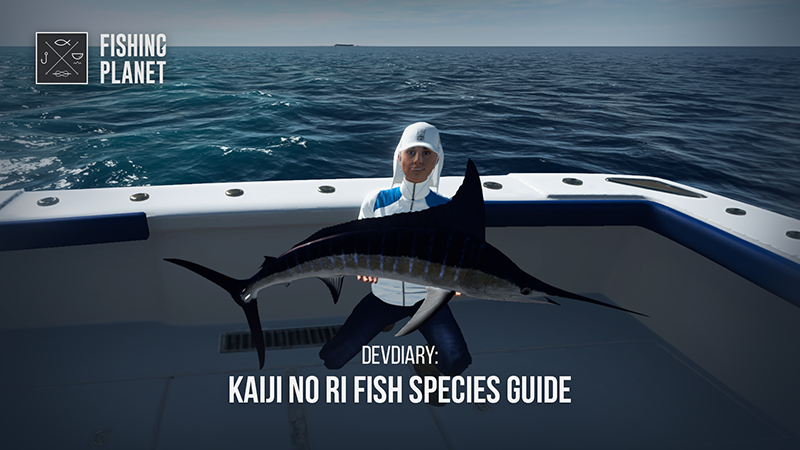
Hey there fellow Angler,
Imagine it’s spring, and the weather is warm. The cool season has passed, although the rainy season hasn't started yet. The water is heating up fast, causing fish to become more active and move closer to the shores. The Pacific Bluefin Tuna spawning season starts.
Excitedly, you gather your friends for a fishing expedition to a small Japanese island. As you prepare, you need to ensure you have all the necessary tackles to reel in the abundant fish awaiting you in this picturesque location. Take the time to study fish range, habitats, diet, lifestyle, and fishing methods to make the most out of this adventure.
This DevDiary will help you in planning your trip and maximizing your fishing experience in Japan.
Naturally, when you think of this region, Tuna comes to mind first!
In this location, you'll encounter six types of tuna — well, technically five, but we'll get to that later. Tuna are highly valued and prized on local markets for their quality in sushi and sashimi.
Yellowfin Tuna
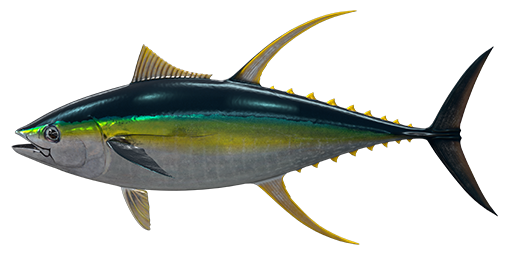
The Yellowfin Tuna (Thunnus albacares), a big pelagic fish of the tuna genus, roams temperate and tropical waters across all oceans. These highly migratory creatures form schools with other tunas, such as skipjack and bigeye, and often swim alongside dolphins.
During the day, they prefer deeper waters but come closer to the surface at night. With impressive dimensions of up to 440 lbs (200kg) and 8.2 feet (2,5 m) in length, they're constantly on the move, feeding actively day and night, seldom diving below 880 feet (100m). Their diet includes small fish, crustaceans, and squid. Yellowfin Tuna are prolific breeders, capable of reproduction year-round.
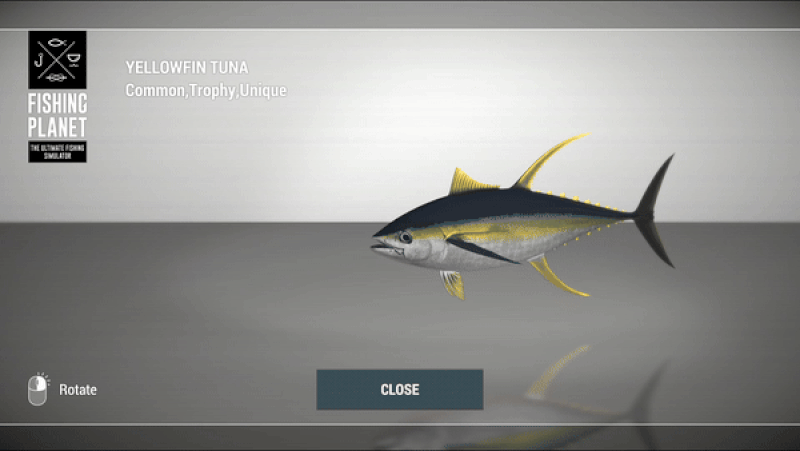
Bigeye Tuna
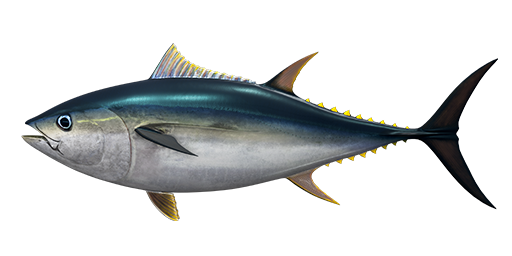
The Bigeye Tuna (Thunnus obesus) shares similarities with the Yellowfin tuna in size, diet, and behavior. However, unlike its closest relatives, Yellowfin and Skipjack Tuna, the Bigeye is known for its longevity, often reaching over 15 years of age. In contrast, Yellowfin Tuna typically live for about 7-8 years at most.
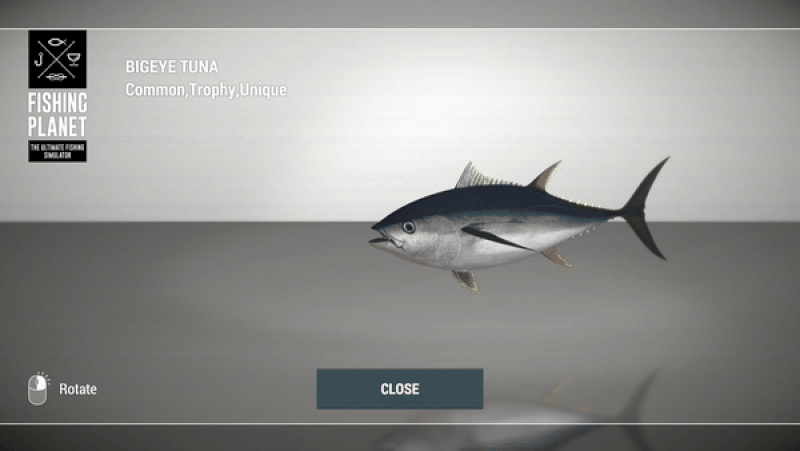
Pacific Bluefin Tuna
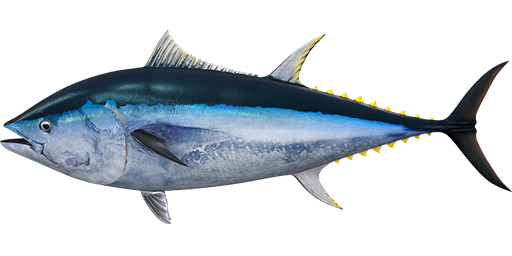
The Pacific Bluefin Tuna (Thunnus orientalis) inhabits warm and moderate waters of the North Pacific Ocean, although it's exceptionally rare in the southern regions. As the largest tuna species in the Pacific and second largest globally (after the Atlantic), it can grow up to an impressive 9 feet (3m) in length and weigh over 880 lbs (400kg).
Typically, Pacific Bluefin Tuna don't venture below 650 feet (200m). Known for their great appetite, they prey on a diverse range of small schooling fish, squid, and crabs.
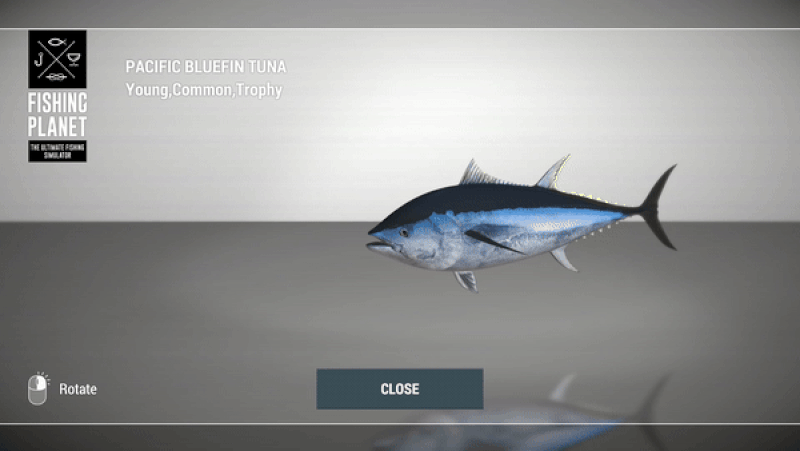
Longfin Tuna (Albacore)
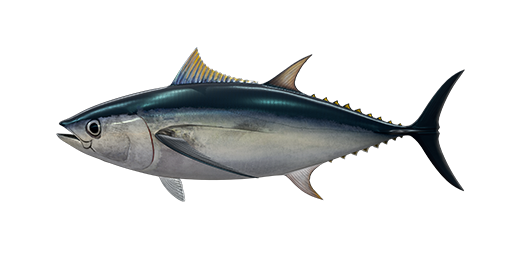
The Albacore (Thunnus alalunga) is distinguished by its notably long pectoral fins. Found in temperate and tropical regions across all oceans, it can grow up to 132 lbs (60kg) in weight. With a remarkable ability to roam from the surface to depths of nearly 2000 feet (600m), Albacore are constantly in motion, actively feeding day and night like their tuna counterparts.
What sets Albacore apart is their dietary preference for cephalopods, especially squid, although they also consume fish, crustaceans, and jelly-like organisms. Albacore meat is considered superior quality and the finest among all tuna varieties.
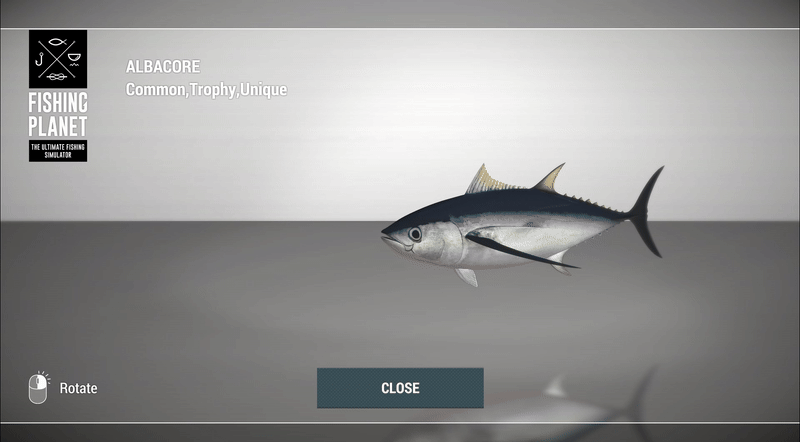
Skipjack Tuna
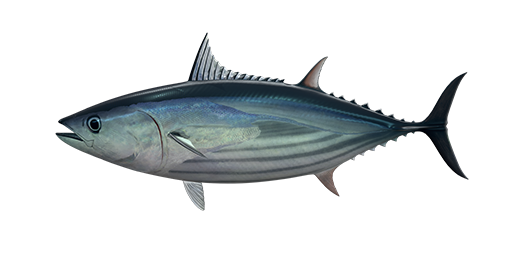
The Skipjack Tuna (Katsuwonus pelamis) is a schooling pelagic fish, distinguished as the sole member of its genus. Widely distributed across temperate and tropical regions of all oceans, it's relatively small, with a maximum weight of 77 lbs (35kg).
In behavior and lifestyle, the Skipjack closely resembles the Yellowfin Tuna, often forming massive schools with them that can number up to fifty thousand individuals, including young specimens. Feeding primarily on small fish, squid, and crustaceans found in surface waters, Skipjack Tuna are a vital commercial species, topping the charts as the most caught tuna worldwide.
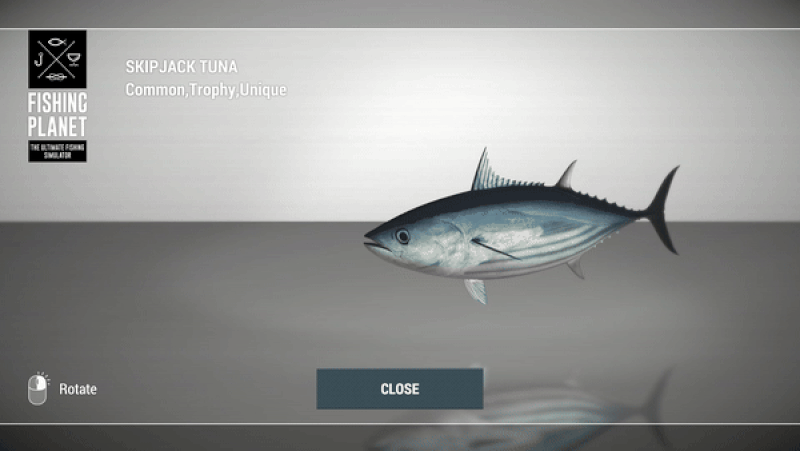
Dogtooth Tuna
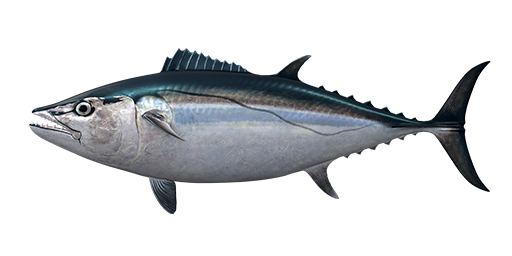
The Dogtooth Tuna (Gymnosarda unicolor) is a large pelagic fish belonging to the Gymnosard genus. Despite its name, it's not actually a true tuna but resembles one externally. Found in the warm waters of the Indo-Pacific region, it inhabits depths ranging from 33 to 1000 feet (10 to 300m).
This formidable predator prefers to lurk near reefs, underwater rocks, and steep cliffs. With lengths reaching up to 8.2 feet (2.5m) and weights up to 287 pounds (130kg), it commands respect in its habitat.
Competing fiercely for food with other fish, including sharks and groupers, the Dogtooth Tuna hunts solo or in small groups. Its diet primarily consists of small schooling fish and squid.
During the fight, it puts up a formidable resistance, often attempting sharp dives to the depths in an effort to break free by rubbing the fishing line against bottom objects.
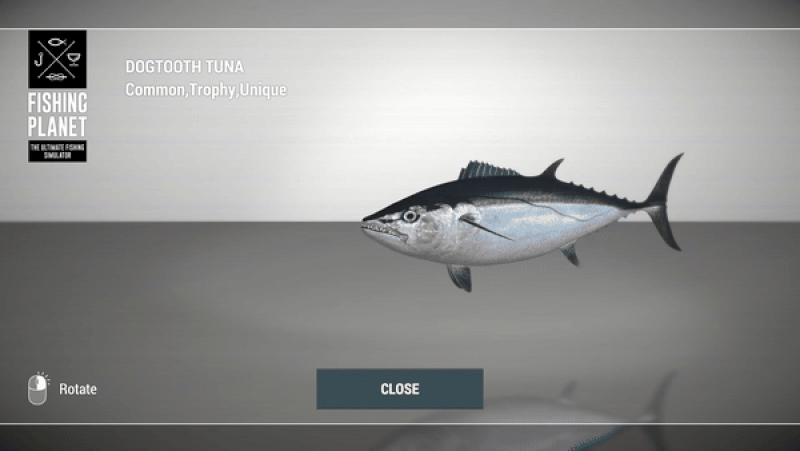
The tackle for fishing all types of tuna remains quite similar.
Anglers favor Finger Mullets, Scaled Sardines, Japanese Flying Squid, Japanese Jack Mackerel, and Japanese Anchovy as preferred baits, along with Plugs, Trolling Octopus, Squid Chain, Crankbaits, Minnows, Medium Spoons, and Poppers as preferred lures.
When it comes to fishing methods, trolling stands out as the top choice for targeting any tuna species.
We've covered tuna, so now let's explore the other fish species found in this region.
Giant Grouper

Giant Grouper (Epinephelus lanceolatus) is a large demersal fish of the Serranidae family. It inhabits coastal waters at depths up to 330 feet (100m). It can reach the length of 8.9 feet (2.7m) and the weight of up to 882 lbs (400kg).
The Giant Grouper is a predator that is not picky about food and prefers ambush hunting. Spiny lobster is its favorite food. It also feeds on crabs, a variety of fish (including small sharks and rays), and young sea turtles. It’s better to use bottom tackle with large animal bait to catch it.
Preferred baits: Japanese Spiny Lobster, Gutted Fish, Large Fish Strips, Crab, Japanese Jack Mackerel, Scaled Sardines
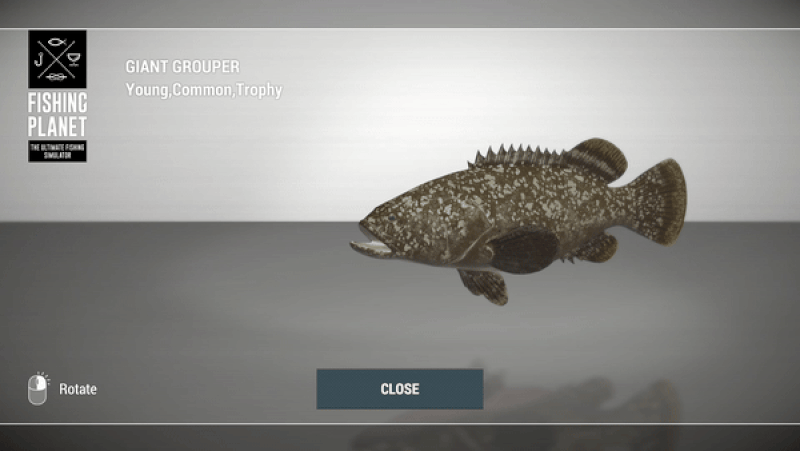
Ruby Snapper

The Ruby Snapper (Etelis carbunculus) is a demersal fish found in the Indo-Pacific region, belonging to the Lutjanidae family. It thrives near rocky reefs, typically dwelling at depths ranging from 300 to 1300 feet (90-400m), with a minimum depth of 33 feet (10m). It can grow up to 77 lbs (35kg) in weight.
Feeding on fish, squid, crustaceans, and cephalopods, the Ruby Snapper often forms small groups. It's commonly caught using bottom or jig tackle, with shiny and luminous elements attracting this species.
Preferred baits include Medium Fish Strips, Large Fish Strips, Crab, Japanese Jack Mackerel, Scaled Sardines, and Japanese Flying Squid, while Pilkers are favored as lures to reel in this fish.
We believe that Ruby Snapper can take part in the Prettiest-fish-in-the-game contest and have all the chances to win. What do you think?

Green Jobfish
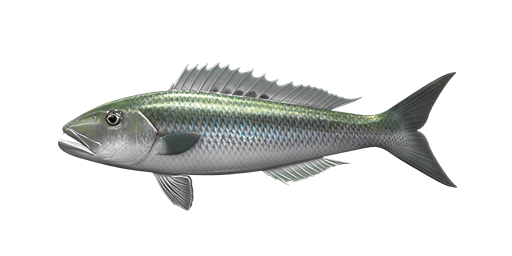
The Green Jobfish (Aprion virescens) is another bottom-dwelling species found in the waters of Kaiji No Ri. Belonging to the Lutjanidae family, it inhabits the Indo-Pacific region, favoring coastal areas near rocky and coral reefs, as well as channels and deep lagoons at depths ranging from 3 to 400 feet (1-120m). It can weigh up to 35 lbs (16kg).
Feeding primarily on fish, the Green Jobfish also consumes crustaceans, cephalopods, and zooplankton. It may lead a solitary life or form small groups. Bottom and jig tackle are most effective for catching it.
Preferred baits include Sea Worms, Shrimp, Gulf Shrimp, Crab, Japanese Jack Mackerel, Japanese Anchovy, Finger Mullets, and Scaled Sardines. Pilkers are the preferred lure for attracting this fish.
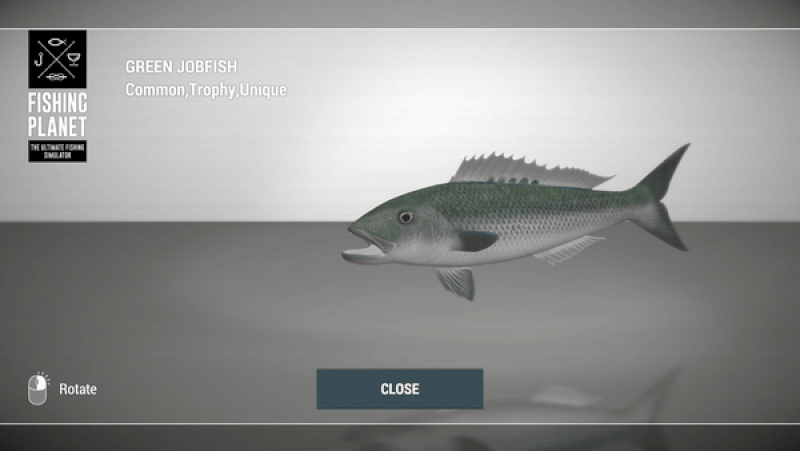
Mahi-Mahi
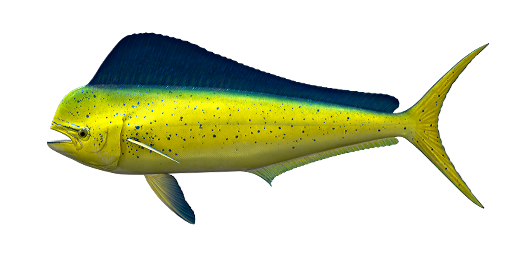
Mahi-Mahi (Coryphaena hippurus), also known as Common Dolphinfish, is a predatory medium-sized pelagic fish. It is very common in tropical and subtropical waters of all oceans. It can reach up to 88 lbs (40kg) in weight and more than 6.5 feet (2m) in length.
This fish lives and hunts near the surface in the open ocean. Its young flock into small groups, and large fish lead a solitary lifestyle. It feeds on zooplankton, flying fish, mackerel, squid, and crabs. It hunts during the day, but can also be active on bright nights.
You can spot the location of Mahi-Mahi on the high seas thanks to birds, Sargassum algae, and a variety of debris that float on the surface and around which forage fish gather. You can catch it by casting and high-speed trolling with artificial lures, as well as live bait.
Preferred baits: Grub, Gulf Shrimp, Finger Mullets, Scaled Sardine, Japanese Jack Mackerel, Japanese Anchovy, Japanese Flying Squid.
Preferred lures: Bucktails, Plugs, Crankbait, Minnows, Popper, Walke, Medium Spoon, Bullet Spinner,Trolling Octopuses.
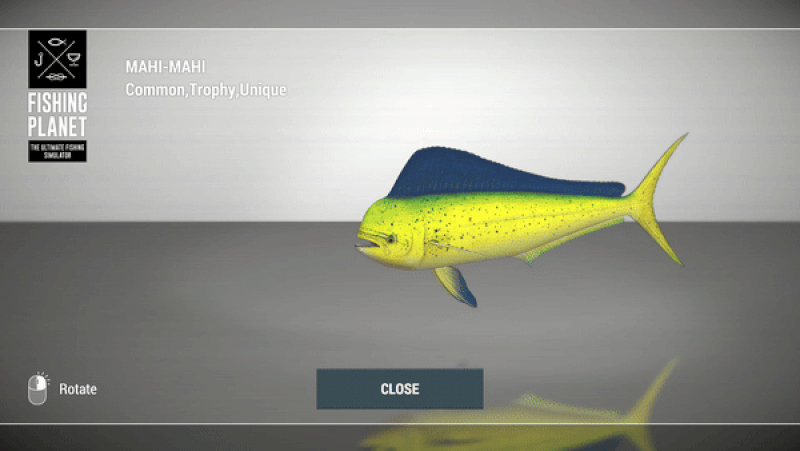
Striped Marlin
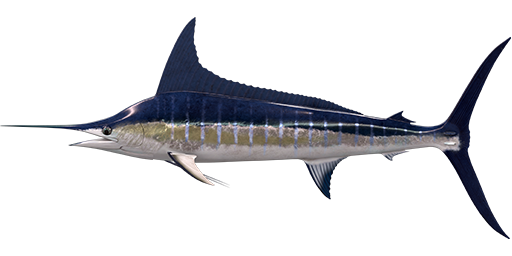
The Striped Marlin (Kajikia audax) is a formidable pelagic predator inhabiting the surface layers of tropical and temperate waters across the Indo-Pacific region. It can potentially grow up to 496 lbs (225kg) in weight and length surpassing 13 feet (4m).
Preferring a solitary existence, Striped Marlins exhibit a unique behavior of cooperative hunting, where multiple individuals target the same prey schools. This nocturnal predator is most active during the night, often seen breaching the water's surface in pursuit of its prey.
Feeding primarily on schooling fish and cephalopods, Striped Marlins are sought after by anglers using trolling techniques with artificial lures or live bait.
Preferred baits: Finger Mullets, Scaled Sardines, Japanese Jack Mackerel, Japanese Anchovy, Japanese Flying Squid.
Preferred lures: Plugs, Trolling Octopuses, Squid Chain, Crankbait, Minnows.
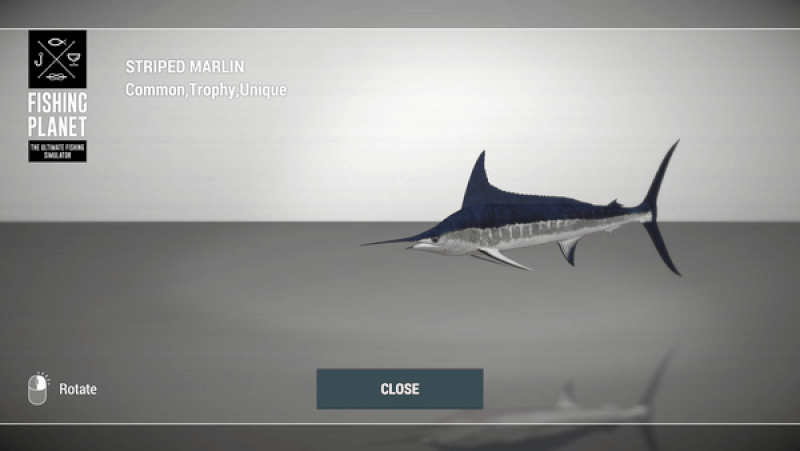
Greater Amberjack
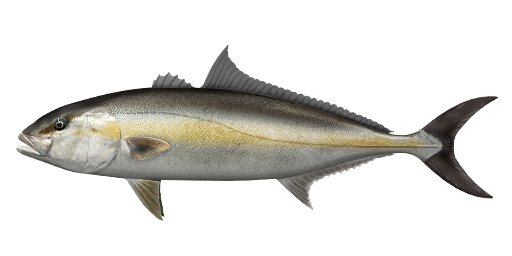
The Greater Amberjack (Seriola dumerili) reigns as the largest member of the Carangidae family, boasting weights exceeding 176 lbs (80kg) and lengths surpassing 6 feet (1.8m). Thriving in tropical, subtropical, and warm temperate waters, this semi-pelagic predator is a formidable force.
Living mostly by the deep-sea structures like caves, reefs, and shipwrecks, the Greater Amberjack sustains itself on a diet of fish, cephalopods, and crustaceans. Known colloquially as the "reef donkey" for its tenacious fighting spirit, it's often encountered as bycatch during bottom fishing expeditions alongside Snappers and Groupers.
To reel in this prized catch, anglers employ trolling and casting techniques, utilizing both live baits and artificial lures.
Preferred baits: Gulf Shrimp, Crab, Finger Mullets, Scaled Sardines, Japanese Jack Mackerel, Japanese Anchovy, Japanese Flying Squid, Medium Fish Strips, Large Fish Strips
Preferred lures: Pilkers, Bucktails, Plugs, Trolling Octopuses, Medium Spoons, Crankbaits, Minnows, Poppers.
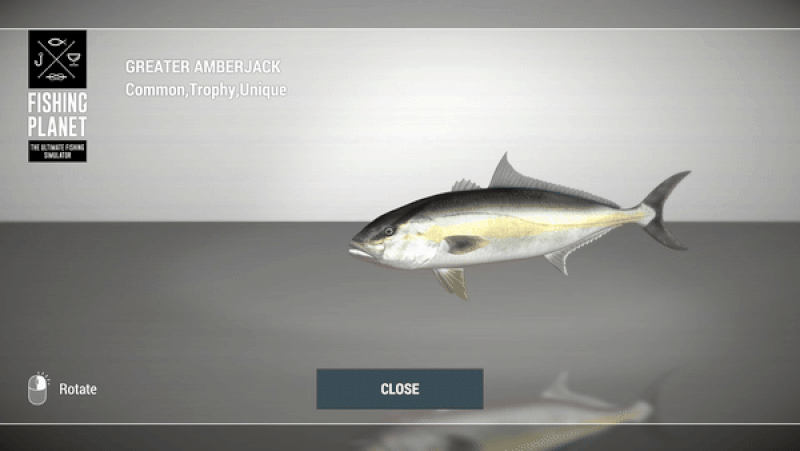
Japanese Amberjack (Yellowtail)

Japanese Amberjack (Seriola quinqueradiata) is a medium-sized schooling pelagic predatory fish of the Carangidae family, also known as Yellowtail. It inhabits open and coastal waters of Japan, Korea, Taiwan. This fish can reach up to 88 lbs (40kg) in weight and 5 feet (1.5m) in length. It feeds on small schooling fish in all layers of water. During the day it tends to stay at a greater depth than at night.
Yellowtail is highly valued in Japan as a fish for sushi and sashimi, as well as for canning.
Japanese Amberjack is often caught as a bycatch during bottom fishing, and can also be caught with trolling or casting. It responds well to fast retrieval with strong and frequent tossing of the bait in the water.
Preferred baits: Shrimp, Finger Mullets, Scaled Sardines, Japanese Jack Mackerel, Japanese Anchovy.
Preferred lures: Pilkers, Bucktails, Minnows, Medium Spoon, Narrow Spoon, Bullet Spinner, Soft Baits (Grubs, Shads).
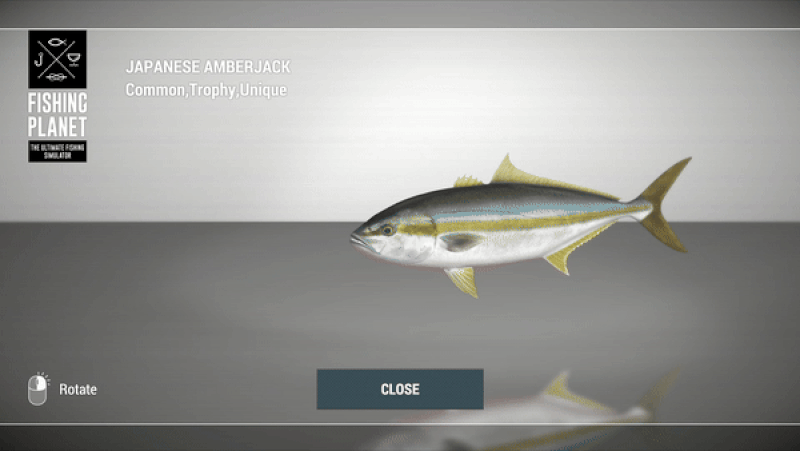
Giant Trevally

Giant Trevally (Caranx ignobilis) is a large coastal semi-pelagic fish that is common in tropical and subtropical waters of the Indo-Pacific region. It’s the largest representative of its kind, reaching 176 lbs (80kg) in weight and 6.5 feet (2m) in length.
Its young live in shallow bays, lagoons, intertidal zones, and estuaries, while adults live in deep pools, near atolls in the open sea, and on deep water reefs. This fish is territorial and leads a solitary life, but sometimes creates small groups.
It hunts around the clock and in all layers of water, but prefers to spend most of the time at the bottom. The Giant Trevally feeds mainly on fish, crustaceans, cephalopods, and doesn’t mind carrion fish. You can successfully catch it with the bottom and spinning tackle.
Preferred baits: Gulf Shrimp, Crab, Finger Mullets, Scaled Sardines, Japanese Jack Mackerel, Japanese Anchovy, Japanese Flying Squid, Medium Fish Strips, Large Fish Strips.
Preferred lures: Pilkers, Bucktails, Crankbait, Minnows, Medium Spoon, Popper, Walker, Soft Baits (Grubs, Shads).
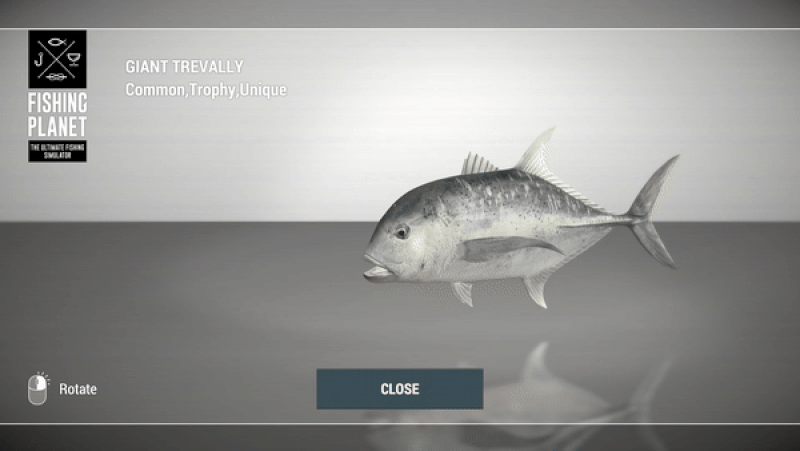
Narrow-Barred Spanish Mackerel
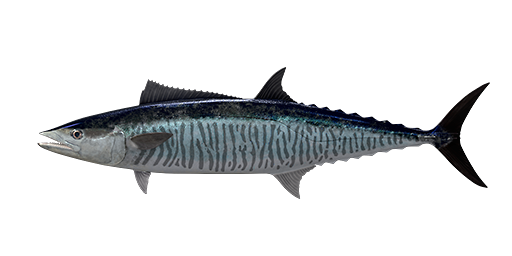
Narrow-Barred Mackerel (Scomberomorus commerson) is a large pelagic coastal schooling fish of the Scombridae family, also known as the Spanish Mackerel. It can reach up to 154 lbs (70kg) in weight and about 8 feet (2.4m) in length.
It can be found at depths of up to 2132 feet (650m) in the tropical waters of the Indian and Western Pacific Oceans. This fish prefers to settle near reefs, but can also swim in estuaries and lagoons.
This is an undemanding and voracious predator that hunts around the clock. Small fish, shrimp, and squid make up the basis of its diet.
Gulf Shrimp, Finger Mullets, Scaled Sardine, Japanese Jack Mackerel, Japanese Anchovy, Japanese Flying Squid are commonly chosen by anglers as preferred baits, and the preferred lures usually are Pilkers, Bucktails, Plugs,Trolling Octopuses, Crankbait, Minnows, Medium Spoon and Soft Baits (Grubs, Shads).
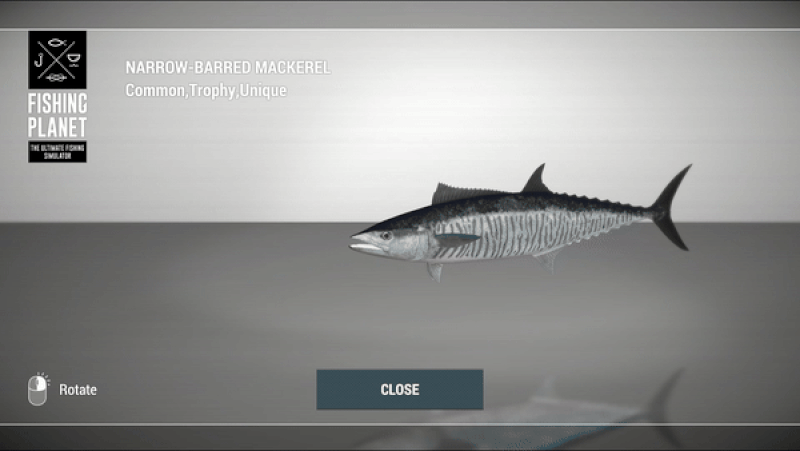
Striped Bonito
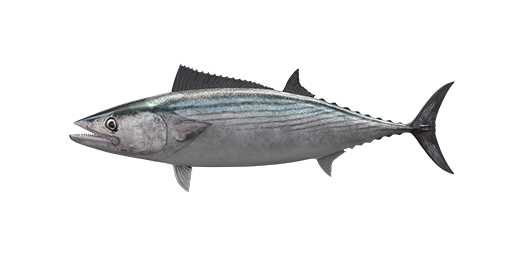
Striped Bonito (Sarda orientalis) is a small schooling pelagic coastal fish of the Scombridae family. It can reach just over 22 lbs (10kg) in weight and more than 3 feet (1m) in length. It lives in subtropical and tropical waters of the Pacific and Indian oceans at depths up to 300 feet (90m).
This fish forms mixed flocks with other mackerels of its size. Small fish, shrimp, and squid make up the basis of its diet. You can catch it by casting and trolling with artificial lures, as well as with live baits.
Preferred baits: Shrimp, Gulf Shrimp, Finger Mullets, Scaled Sardine, Japanese Jack Mackerel, Japanese Anchovy
Preferred lures: Pilkers, Bucktails, Crankbait, Minnows, Medium Spoon, Narrow Spoon, Bullet Spinner, Soft Baits (Grubs, Shads).
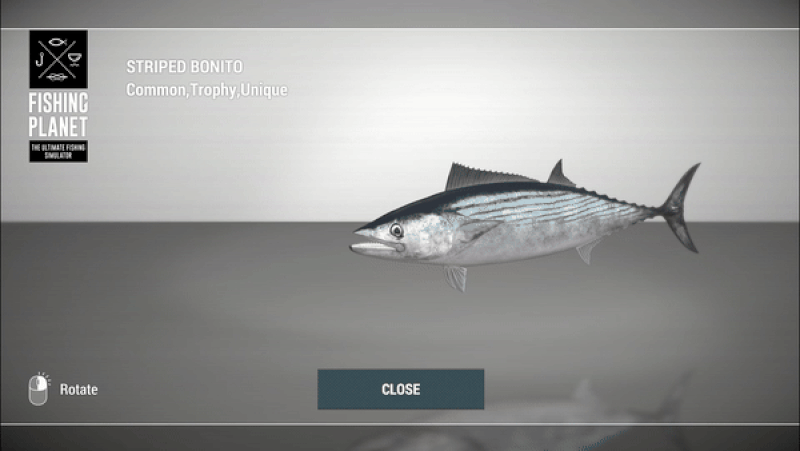
Japanese Jack Mackerel
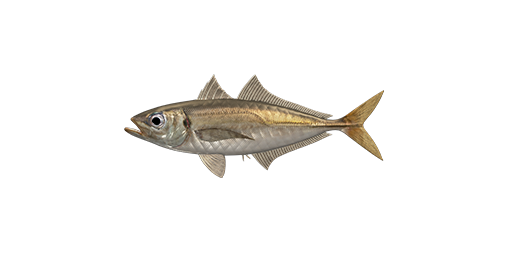
Japanese Jack Mackerel (Trachurus japonicus) is a rather large pelagic schooling fodder fish of the Carangidae family. It can reach 1.6 feet (0.5m) in length, and its weight can be more than 1.3 lb (0.6kg). It lives at depths of up to 900 feet (275m) on sandy bottom areas in the coastal zones of the East China and Japan Seas, as well as off the coast of southern Japan, the Korean Peninsula and Taiwan in waters of 60–80° F (15-27°C).
The Japanese Jack Mackerel feeds on small crustaceans (copepods), as well as shrimps and small fish. You can successfully catch it from berths in marinas both during the day and at night (especially with a torch), with a spinning rod using small lures, as well as with float tackle using animal baits.
Preferred baits: Sea Worms, Finger Mullets, Shrimp, Japanese Anchovy.
Preferred lures: Soft Baits (Grubs, Worms, Craws, Slugs).
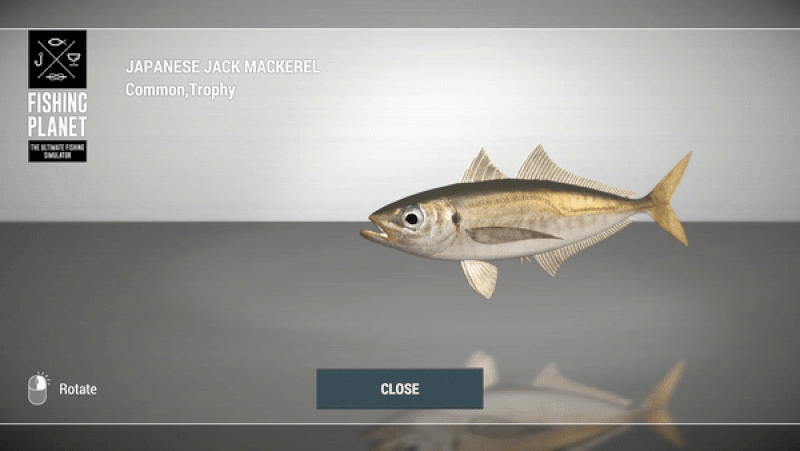
Japanese Anchovy
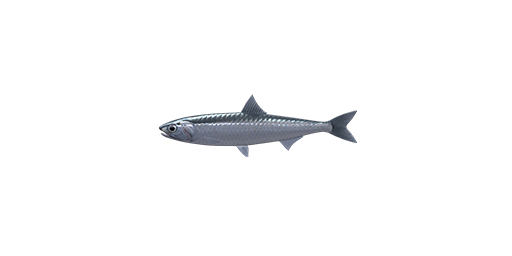
Japanese Anchovy (Engraulis japonicus) is a small schooling pelagic fish up to 8 inches (20cm) long that weighs up to 3.5 Oz (100g). It lives in the upper layers of water, but can be found at a depth of up to 1380 feet (420m) in coastal areas, in the south of the Sea of Okhotsk, in the Japan, Yellow, and East China Seas, as well as off the Japan’s Pacific coast.
The Japanese Anchovy is a plankton feeder. Adults mostly feed on zooplankton: copepods, eggs and larvae of fish and spineless. This fish is an important product of commercial fishing. You can also catch the Anchovy with float and spinning tackle during any time of the day.
Usual preferred baits are Natural Eggs, Sea Worms and Spawn Sack, and preferred lures are Soft Baits like Worms and Slugs.

Bigfin Reef Squid
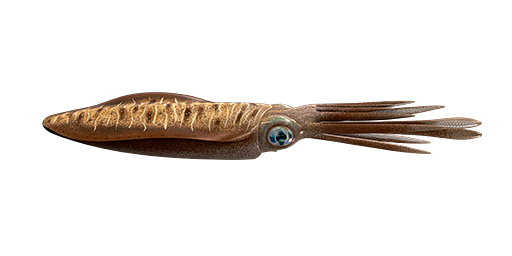
The Bigfin Reef Squid (Sepioteuthis lessoniana) is a small mollusc, growing up to 2.6 feet(80cm) in length and weighing as much as 4.4 lbs (2kg). Resembling a cuttlefish due to its long fins, it's commonly found in the temperate and tropical waters of the Pacific and Indian Oceans. Inhabiting depths of up to 330 feet (100m) near coastlines, particularly around rocks and coral reefs, this squid tends to gather in groups and remains active day and night, although it may be less active during daylight hours.
As a voracious predator, its diet consists mainly of crustaceans and small fish, and it forages in shallow and deep waters across all layers. Anglers can catch the Bigfin Reef Squid year-round using a spinning rod equipped with squid and jig lures.
Preferred baits: Shrimp, Gulf Shrimp,Finger Mullets, Scaled Sardine, Japanese Jack Mackerel, Japanese Anchovy.
Preferred lures: Pilkers, Squid Jigs.

Here’s the list of all the fish species you'll encounter in the waters of Kaiji No Ri, but that's not all we have for you!
As mentioned earlier, the upcoming ocean map will be over 20 times bigger than all the other maps in the game combined. As you can see from the fish guide above, there will be a significant presence of highly migratory fish species in this expansive location. The ocean update comes packed with several major features that are entirely new to the game and one of them, which we've dubbed Fish Active Zones, will provide anglers with valuable hints on where to find feeding grounds, the areas where fish gather to feed on bait fish, plankton, or other food sources.
These areas are typically characterized by natural features or phenomena that attract fish, such as underwater structures, currents, temperature changes, or concentrations of prey. For example, seabirds such as seagulls often hover or dive over areas where fish are feeding near the surface. Such behavior indicates the presence of baitfish being chased by larger predatory fish. In such hotspots you'll witness different species of tuna leaping out of the water to hunt small fish. We won’t reveal all the secrets now to ensure your adventure remains unspoiled when the ocean map is released, but to give you an idea of the feature's complexity, the Fish Active Zones will dynamically change based on factors such as weather, time of day, and other natural elements, mirroring real-life conditions.
Last but not least, we've covered the fish you can catch, but there's more. While cruising on your yacht through the ocean, you'll encounter pods of dolphins and majestic whales breaching the surface. These ocean creatures will not only add to the thrill of your stay, but they'll also serve other purposes, which you'll discover later on.
We feel your anticipation for the ocean update, and we share your excitement! Your support and attention mean the world to us as we work to bring you this new experience. Stay tuned for our next DevDiary, where we'll explore the Kaaiji No Ri location and its new features in more detail.
Until next time,
Fishing Planet Team
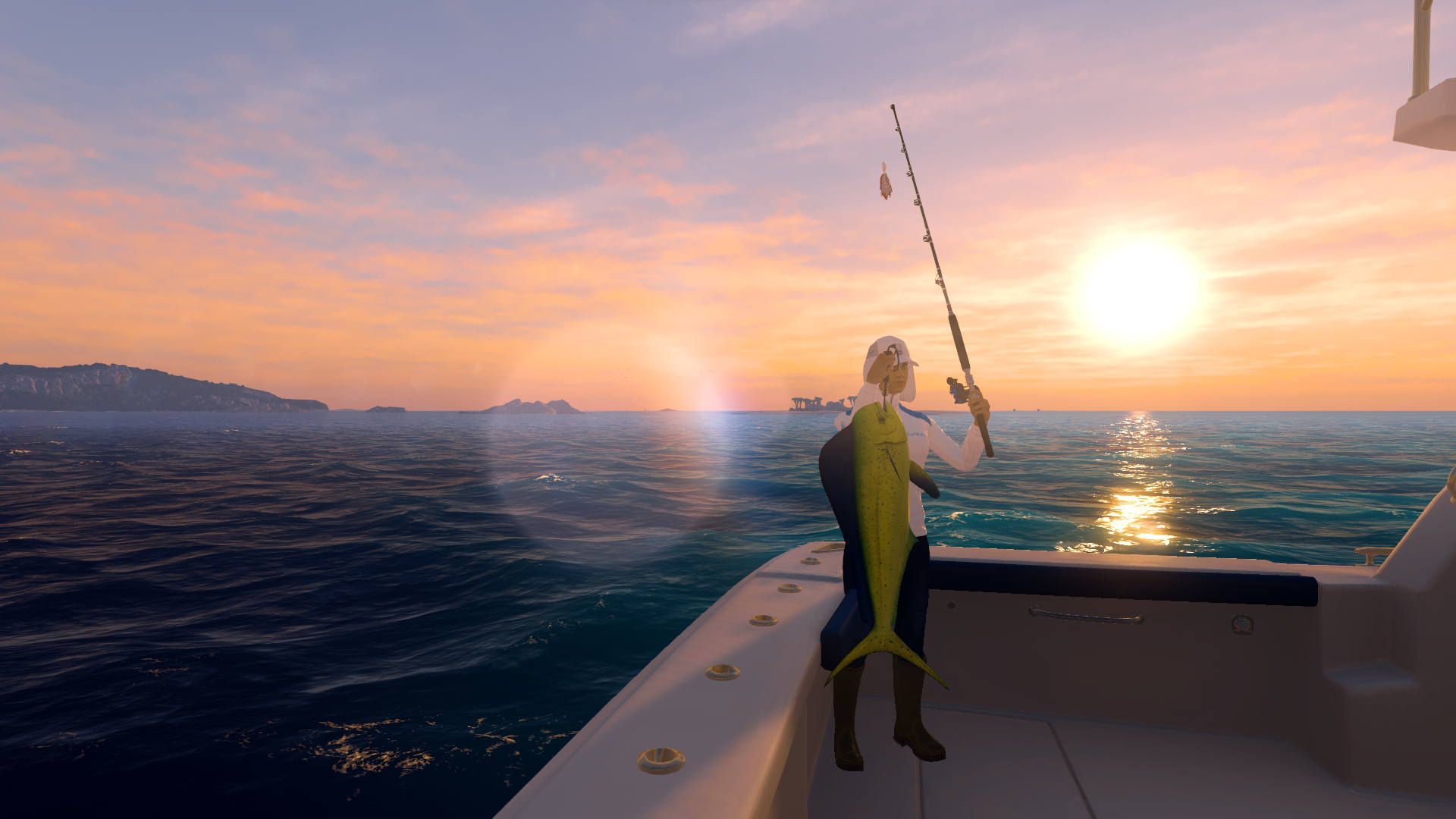
___________________________________________________________________
Follow us on social media to stay tuned and be in touch with our lovely community:
Read previous DevDiaries on the ocean update:
DevDiary: Exploring Kaiji No Ri
DevDiary: Fishing Together
You are always welcome to ask for help in our support: support@fishingplanet.com
*All visual content in this DevDiary is crafted to showcase the upcoming features; however, there may be slight differences upon the actual release of the update




